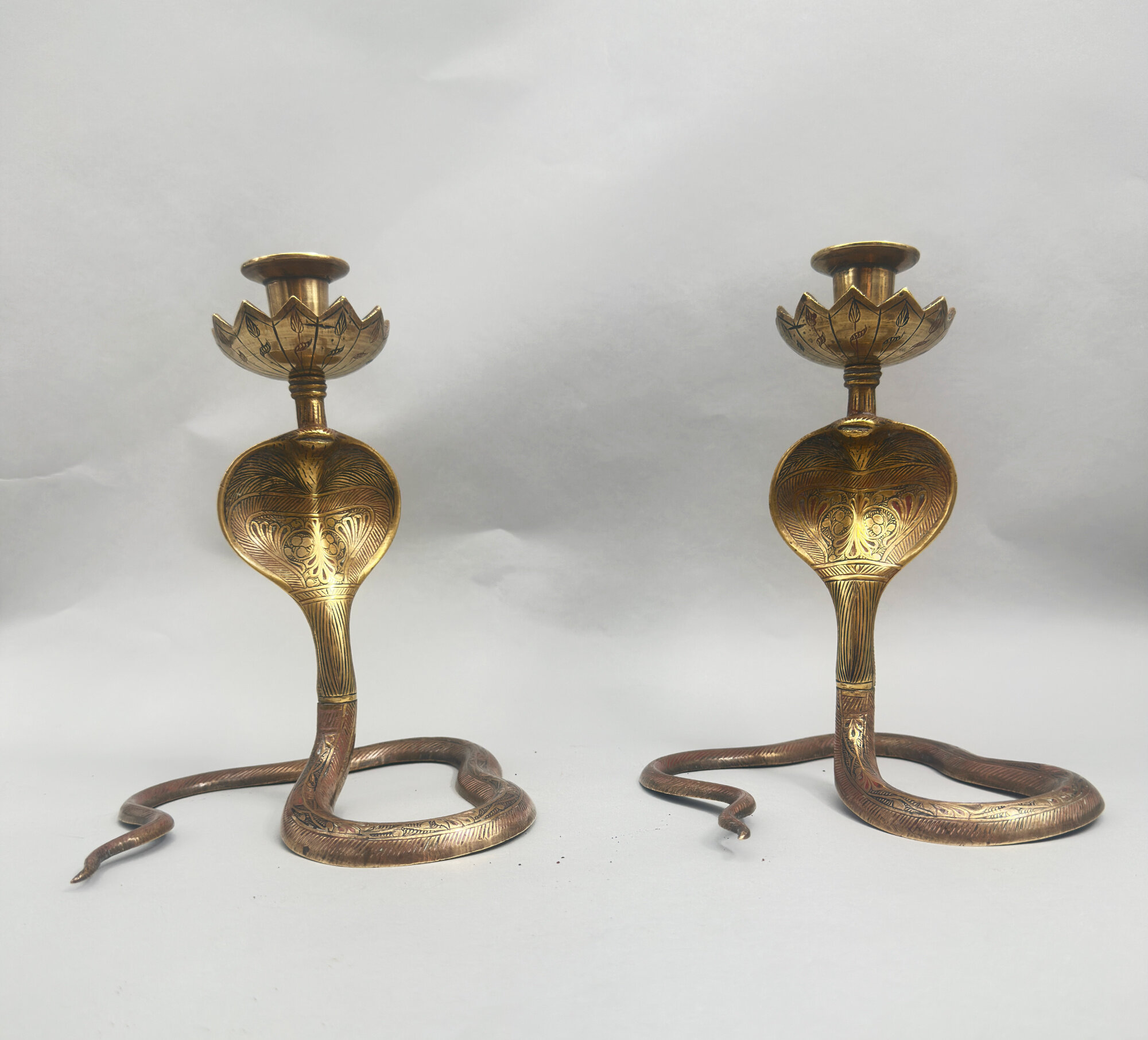Far Eastern Works of Art


Silver Cricket Box, Islamic probably Persian, early C20th
Price: £110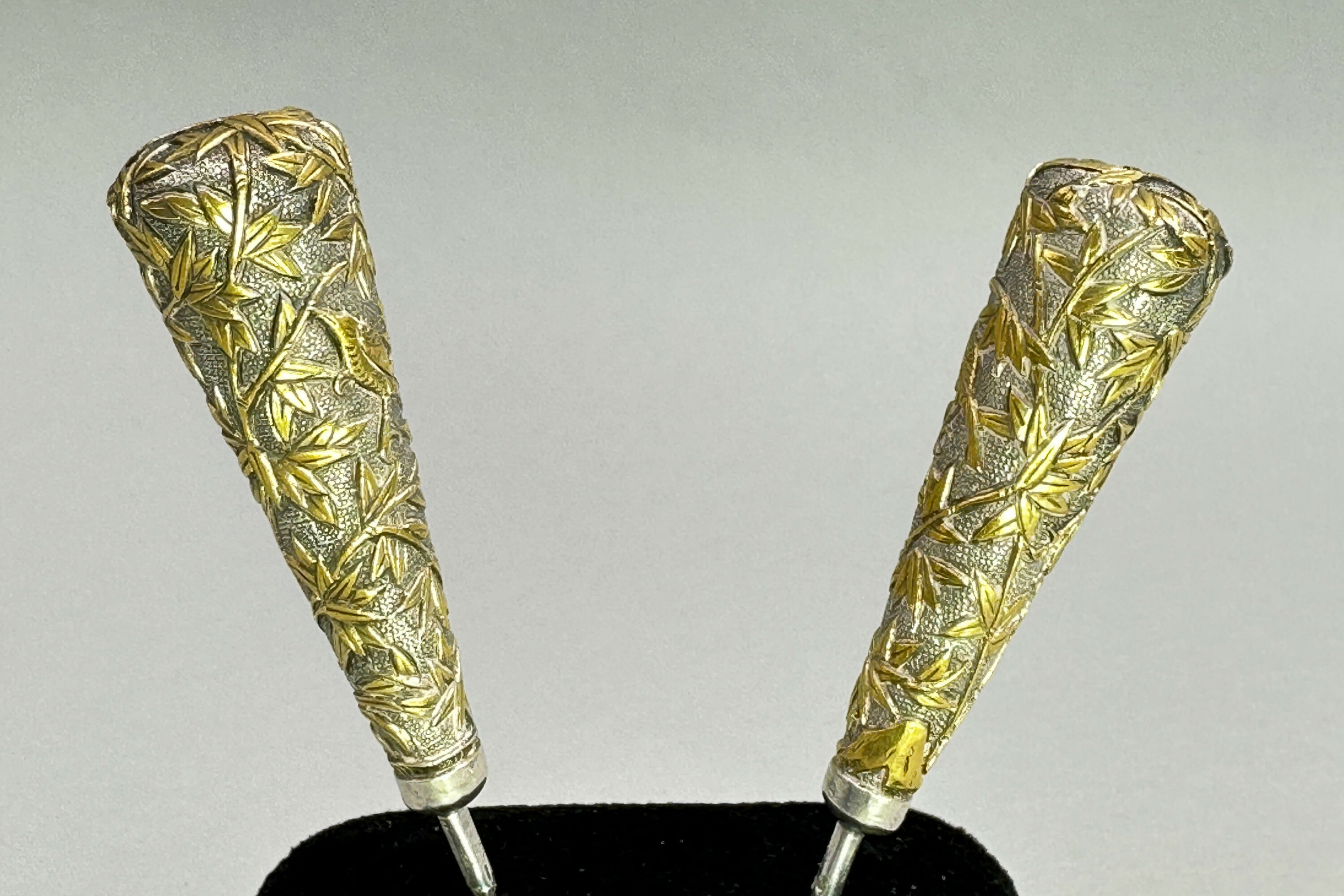
An Unusual Pair of Bradawl Form Sewing Tools, probably Persian C20th
Price: £45
A Large Islamic Pewter Ewer, C20th
Price: £45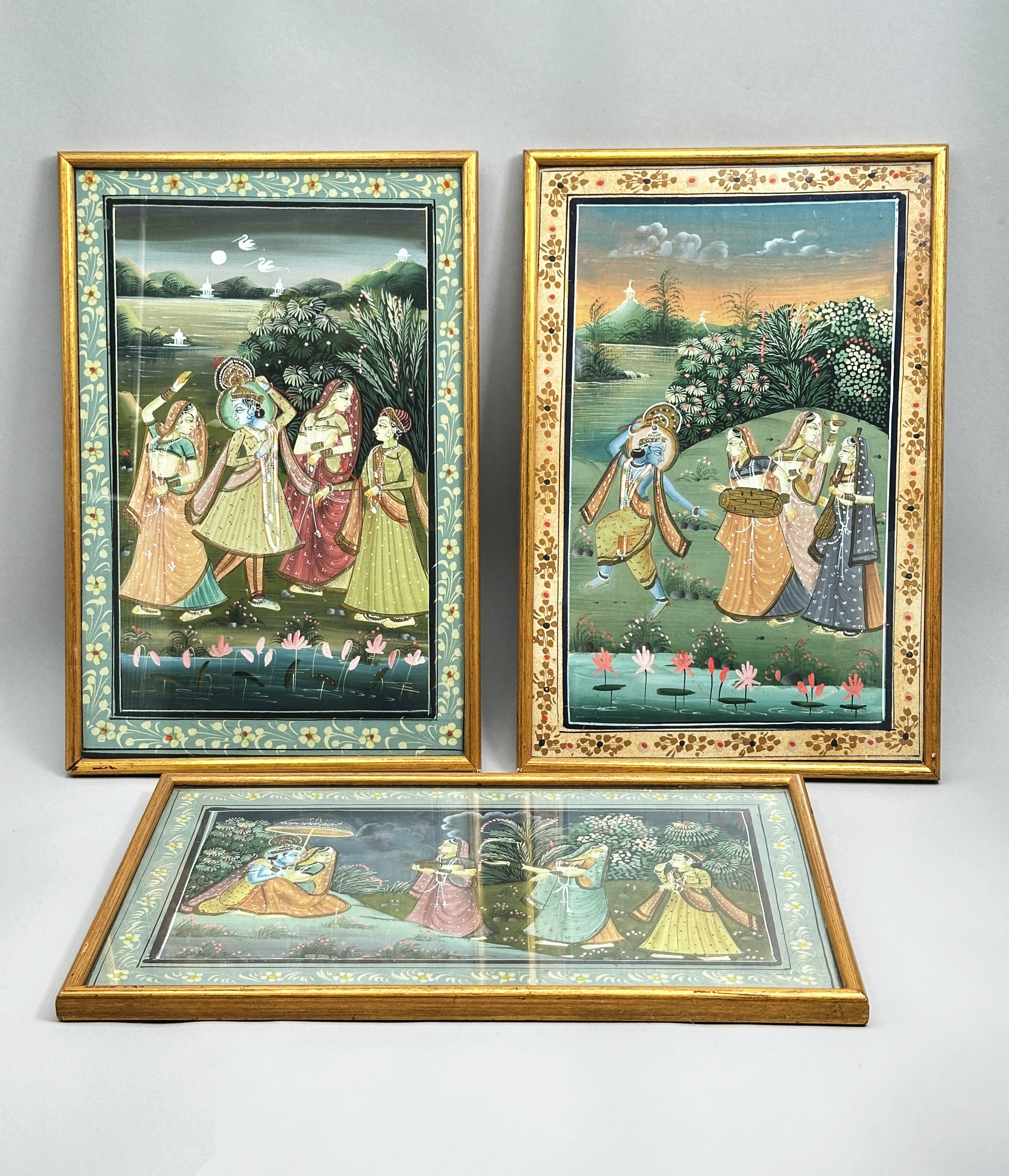
Three Indian gouache paintings depicting Krishna and Radha, framed, first half C20th
Price: £150
A pair of Mughal style carved wood miniature screen picture frames, C20th
Price: £55
Brass and Enamel Campaign Serving Set, Made in British India mark, 1920s
Price: £45
Lacquer Box in the form of a Duck, possibly Persian C20th
Price: £35
Persian Red Lacquer Box in the form of a Pumpkin, late 19th century
Price: £35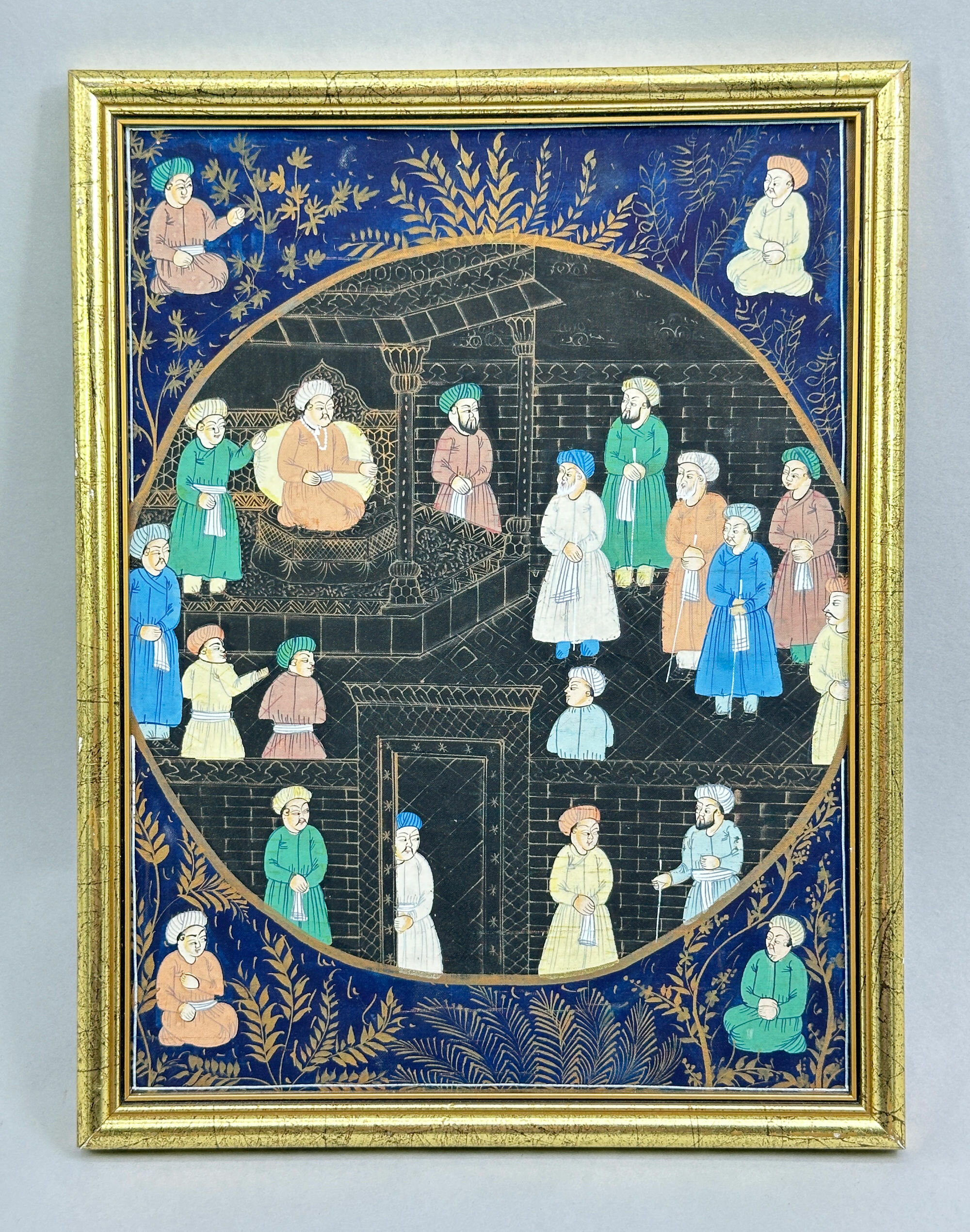
A Mughal style Gouache Painting depicting a Dignitary and Attendants, C20th
Price: £75
Outstanding Ottoman silver marriage mirror, Turkey early 20th century
Price: £125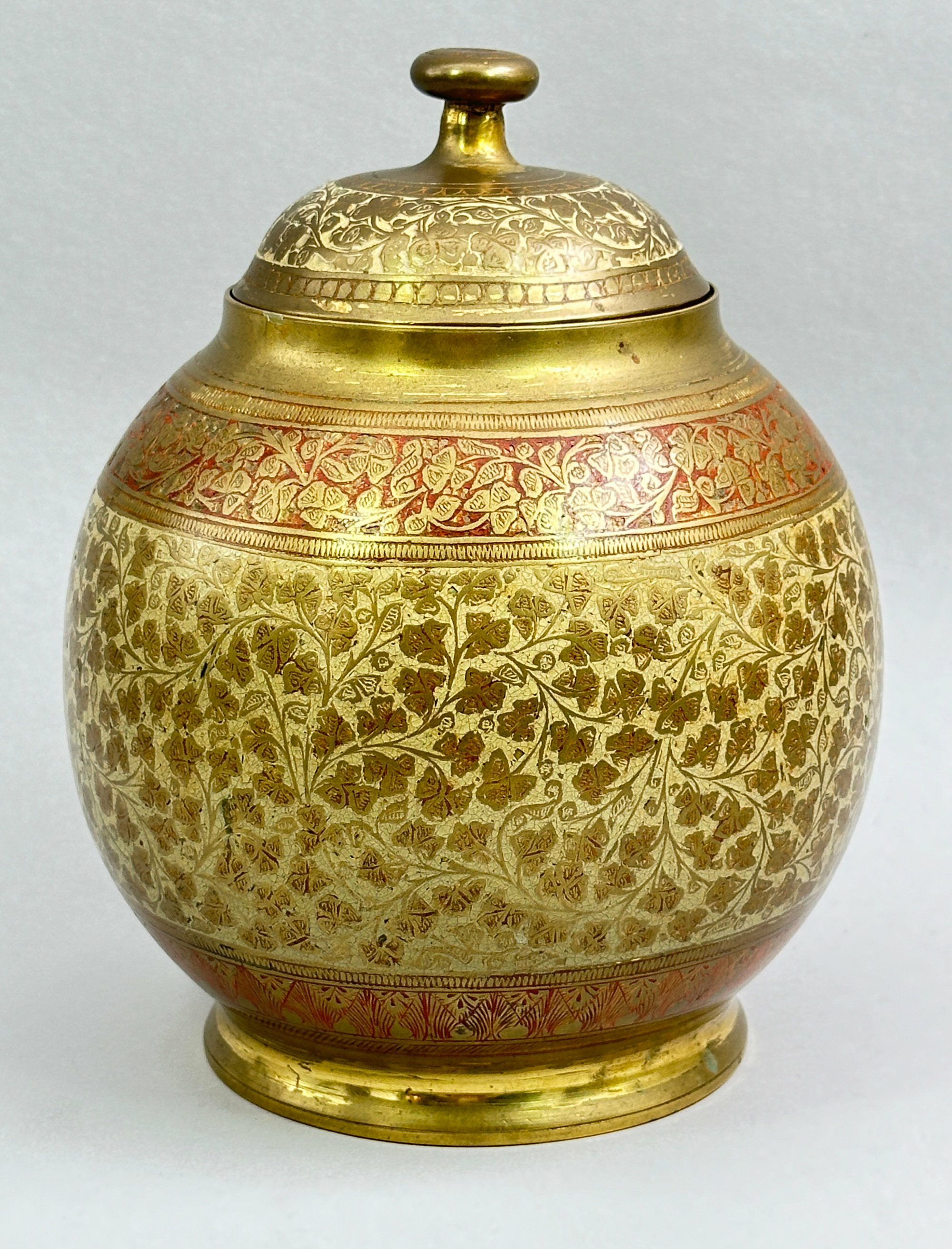
Indian Brass Potiche and Cover, early C20th
Price: £45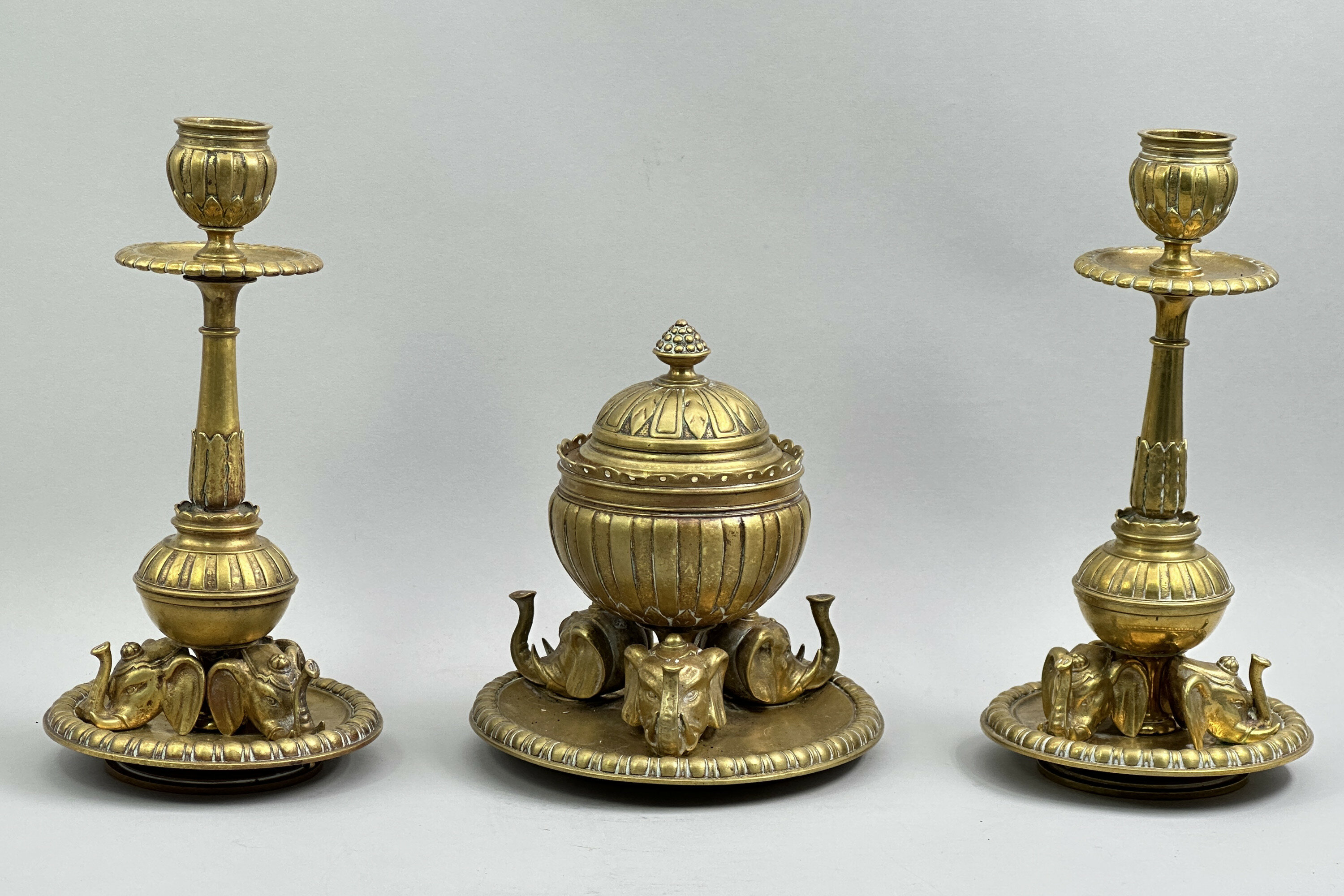
Unusual Brass Table or Desk Set with Elephant Heads, Indian, first half C20th
Price: £240The craftsmanship of this set is self evident both in the quality and weight of the brass and the casting techniques used. Its purpose is less certain and there are no easy parallels. The central vessel might have been designed for incense (although the cover is solid rather than openwork) in which case we could have a table ornament here, but the interior of the vessel can seem to resemble an inkwell in which case we might have a desk set. It's new owner will have to decide! Style of decoration suggests India in the early part of the C20th and this set would then be one of the many pieces exported to the Britain from India at that time and which became very much a feature of contemporary domestic interiors.
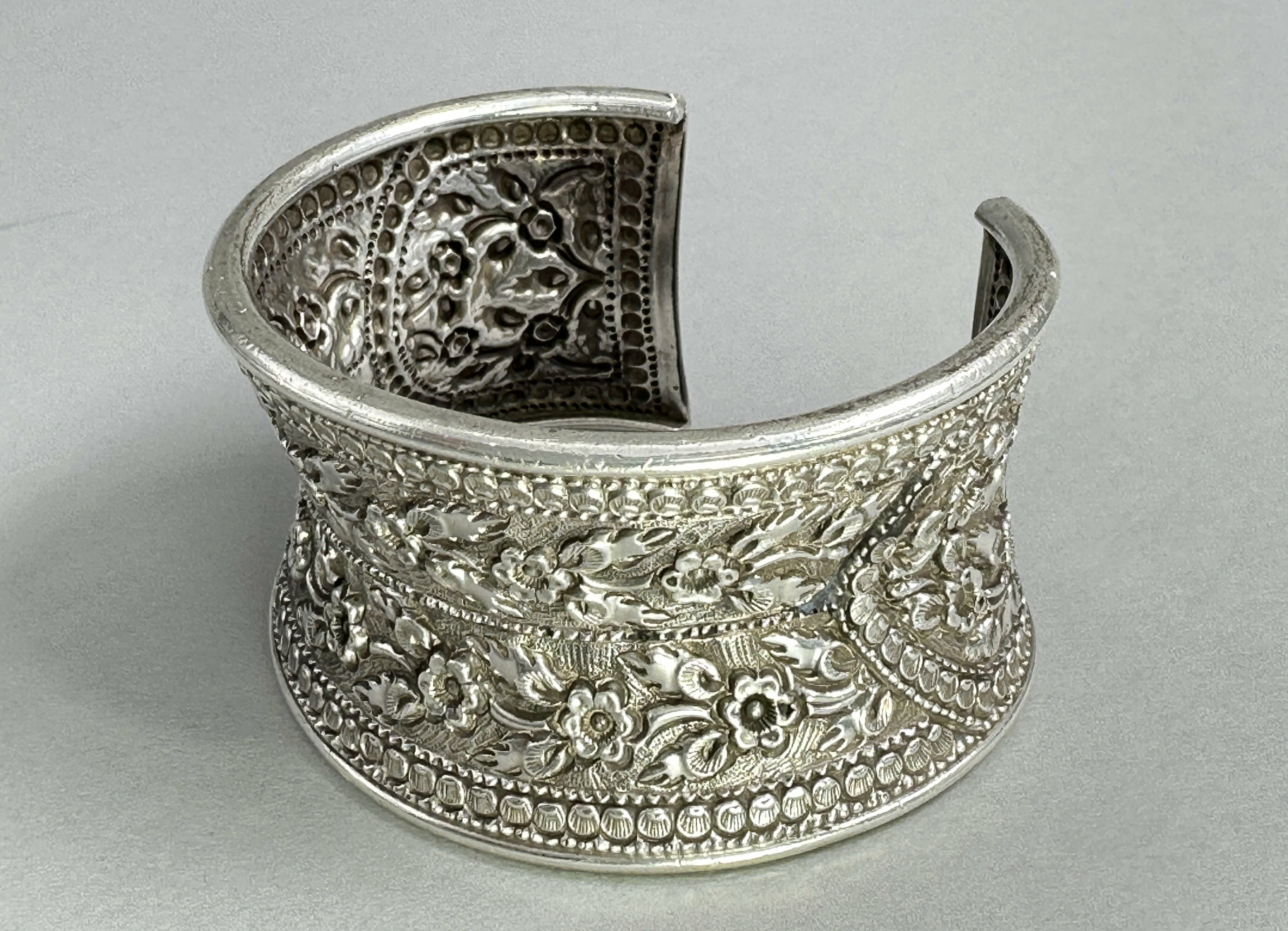
Indian silver repousse cuff bracelet, c1920
Price: £85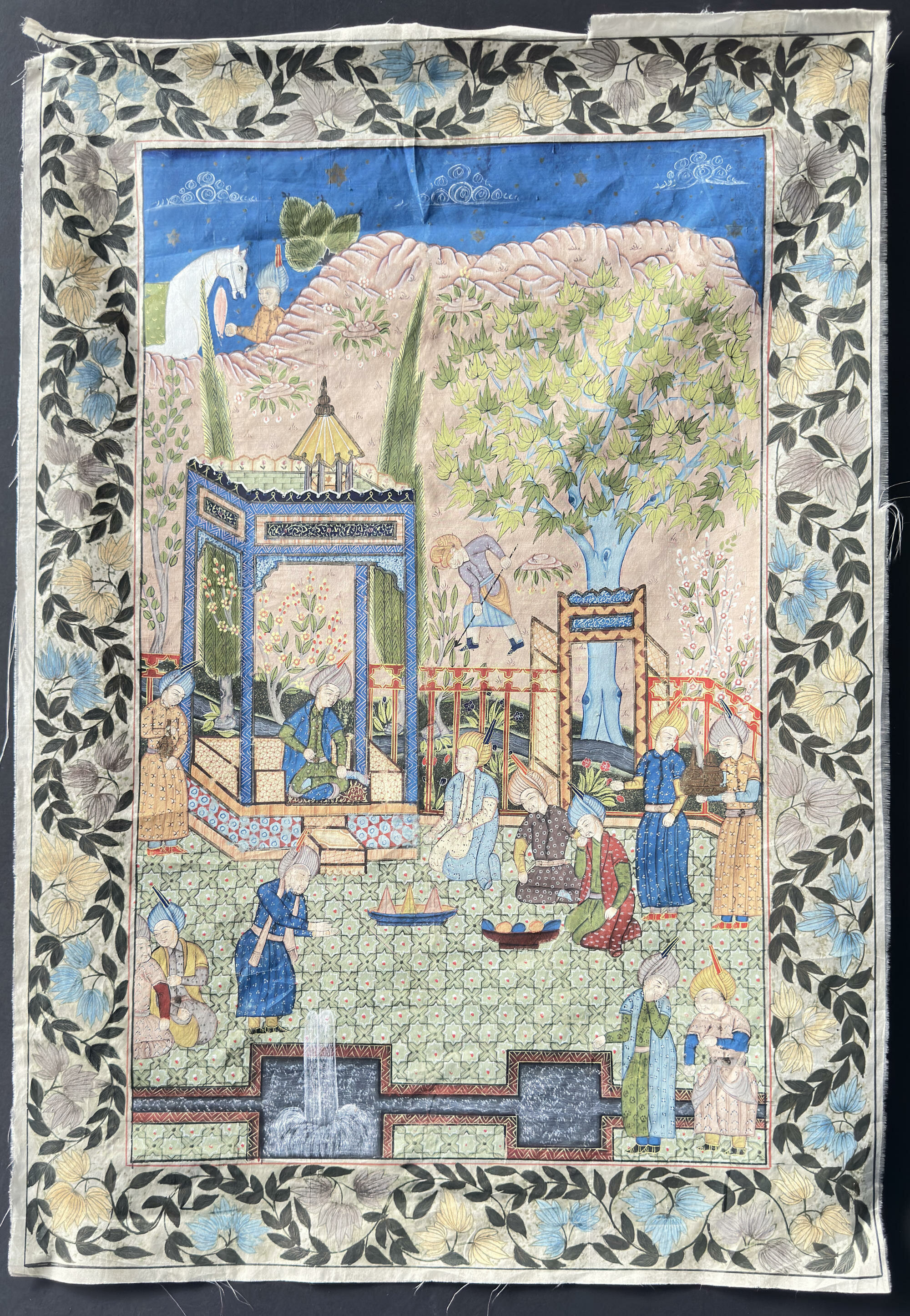
Persian Painting on Silk depicting Courtiers in a Palace Scene, C19th/C20th
Price: £75The ‘Khamsa’ (Quintet or Quinary) is the best known work of Nizami Ghanjavi (c1141 – 1209) considered the greatest romantic epic poet in Persian literature. It comprises five long narrative poems the first of which is ‘Makhzan-ol-Asrar’ (The Treasury or Storehouse of Mysteries) and contains an episode where two physicians agree to fight each other with poison: each would give the other a poison and the doctors would then attempt, by their skill, to provide an antidote. One doctor succeeds but the other has less luck and in the version of the scene mentioned above is depicted lying ill on the ground.
The Khamsa was a popular subject for lavish manuscripts illustrated with painted miniatures at the Persian and Mughal courts in later centuries. The British Museum picture mentioned above, for example, comes from a manuscript created for the Mughal Emperor Akbar in the 1590s. Scenes from these works were then copied or adapted in turn by Persian artists in the late nineteenth and early twentieth centuries which is what we have here. The quality of the execution remains high producing a highly decorative example of the best Persian work.
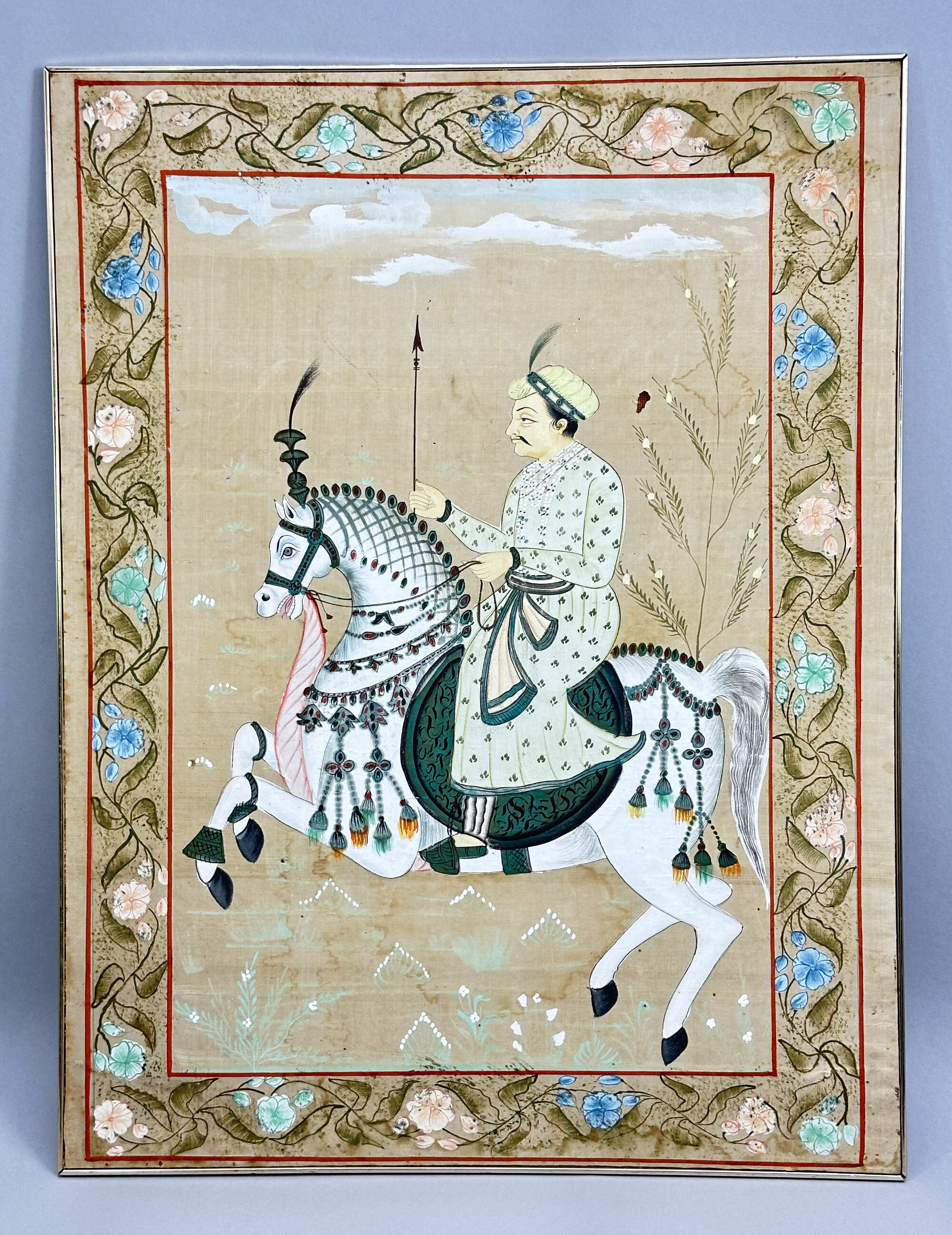
Persian Gouache painting on silk of a horseman, C 19th
Price: £25The style of painting here and the use of silk as the medium are typical of Persian work, and the detail of the brushwork, notably the man’s hair and the horse’s head suggest nineteenth rather than twentieth century workmanship and while a little age worn, this is a striking example of the genre.
Please note that the silk is glued to the hardboard backing at the reverse (see image 10); the simple gilt frame is just fitted to the edge and the piece is not glazed.
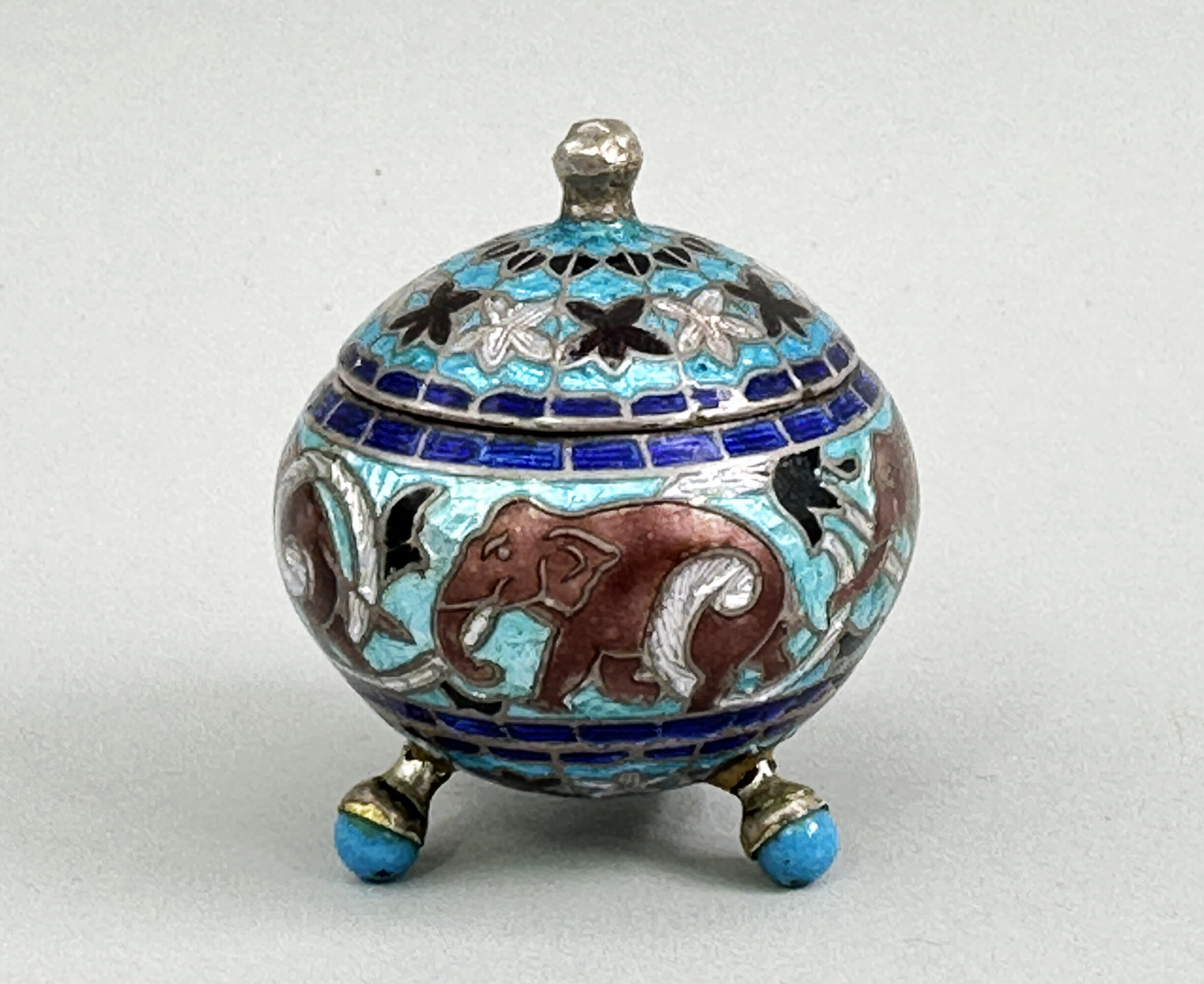
Indian Silver and Enamel pill or trinket Box, early C20th
Price: £55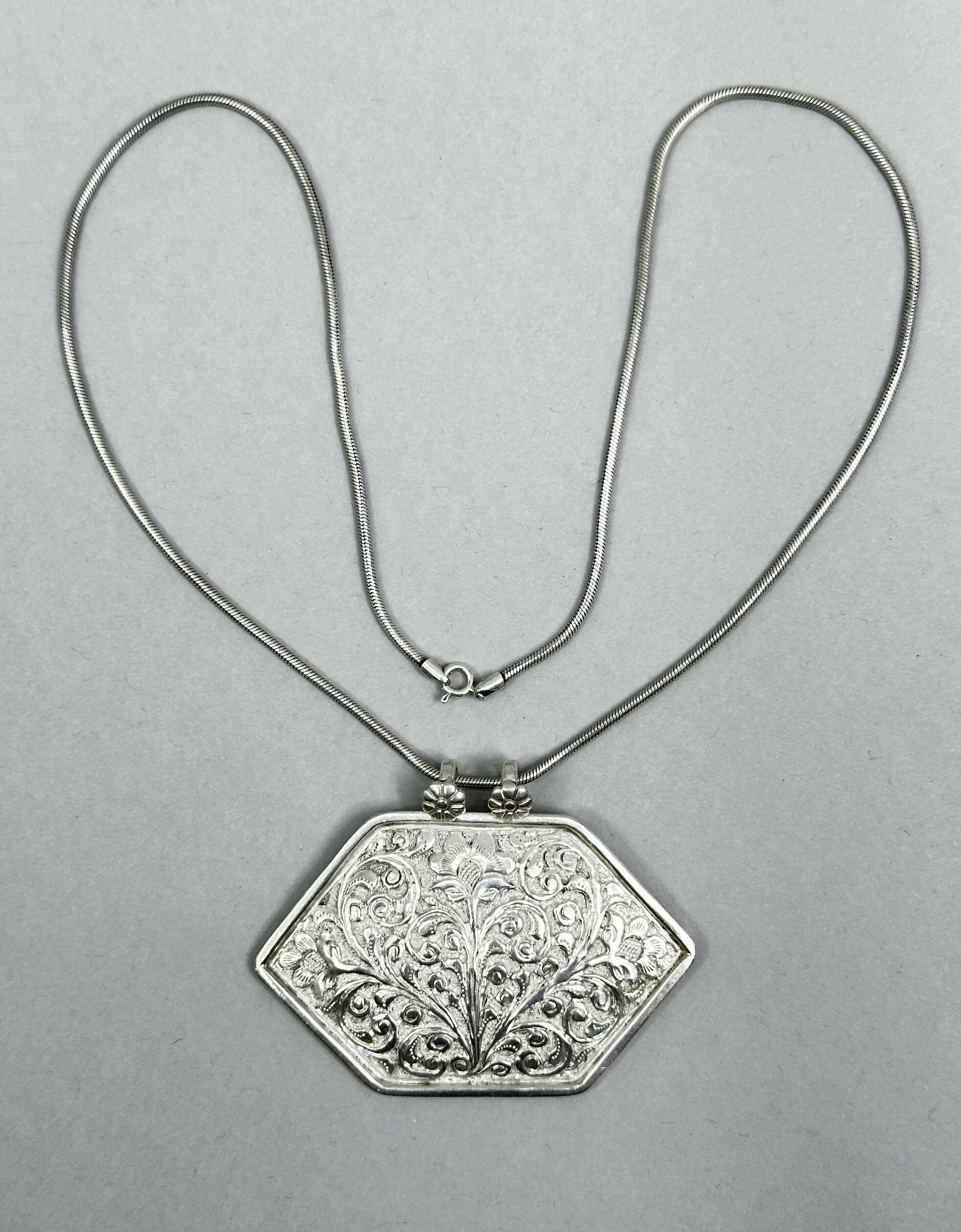
Very fine Indian silver repousse plaque Necklace, c1970
Price: £55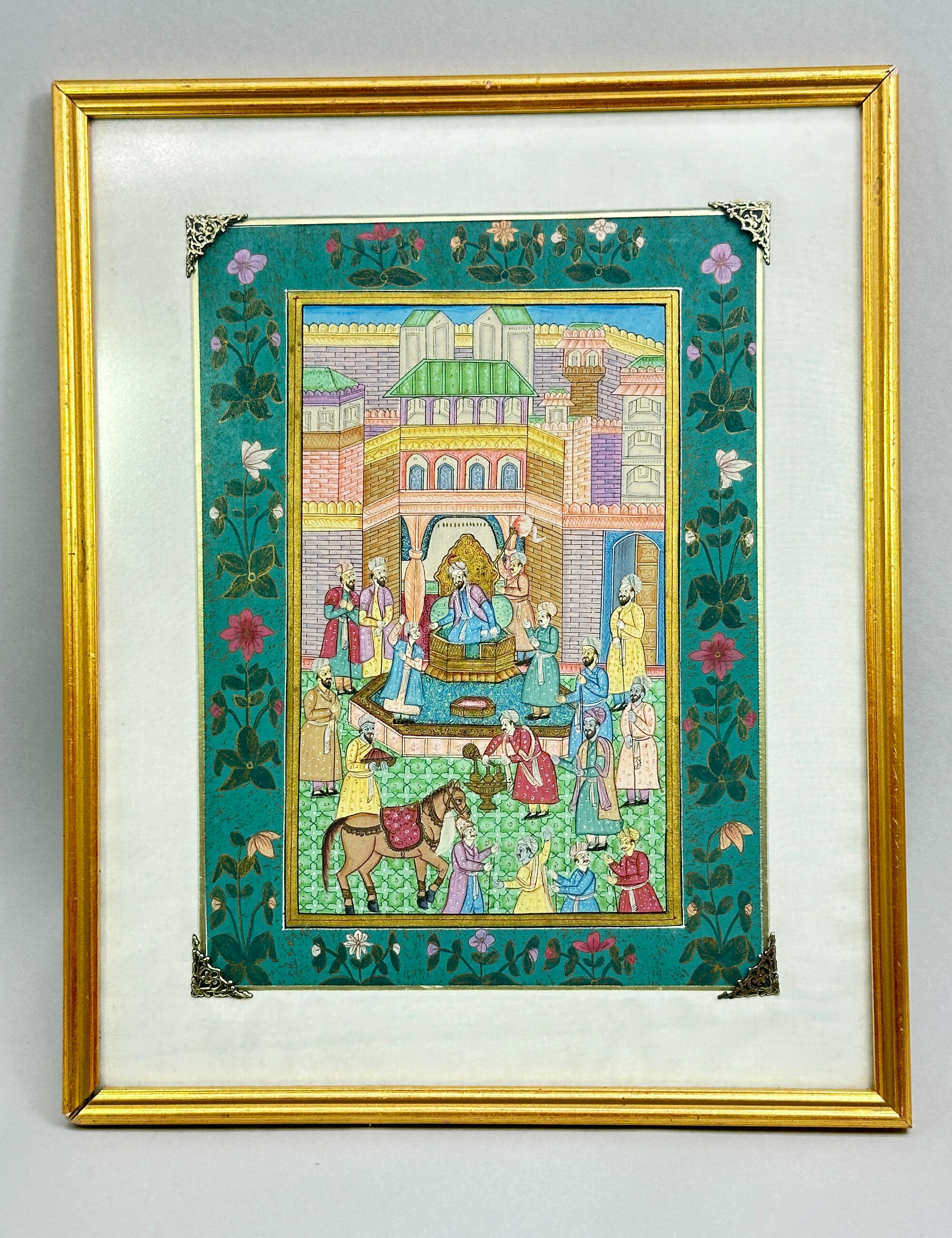
Gouache Painting of a Court Figure Scene, Indian or Persian, C20th
Price: £45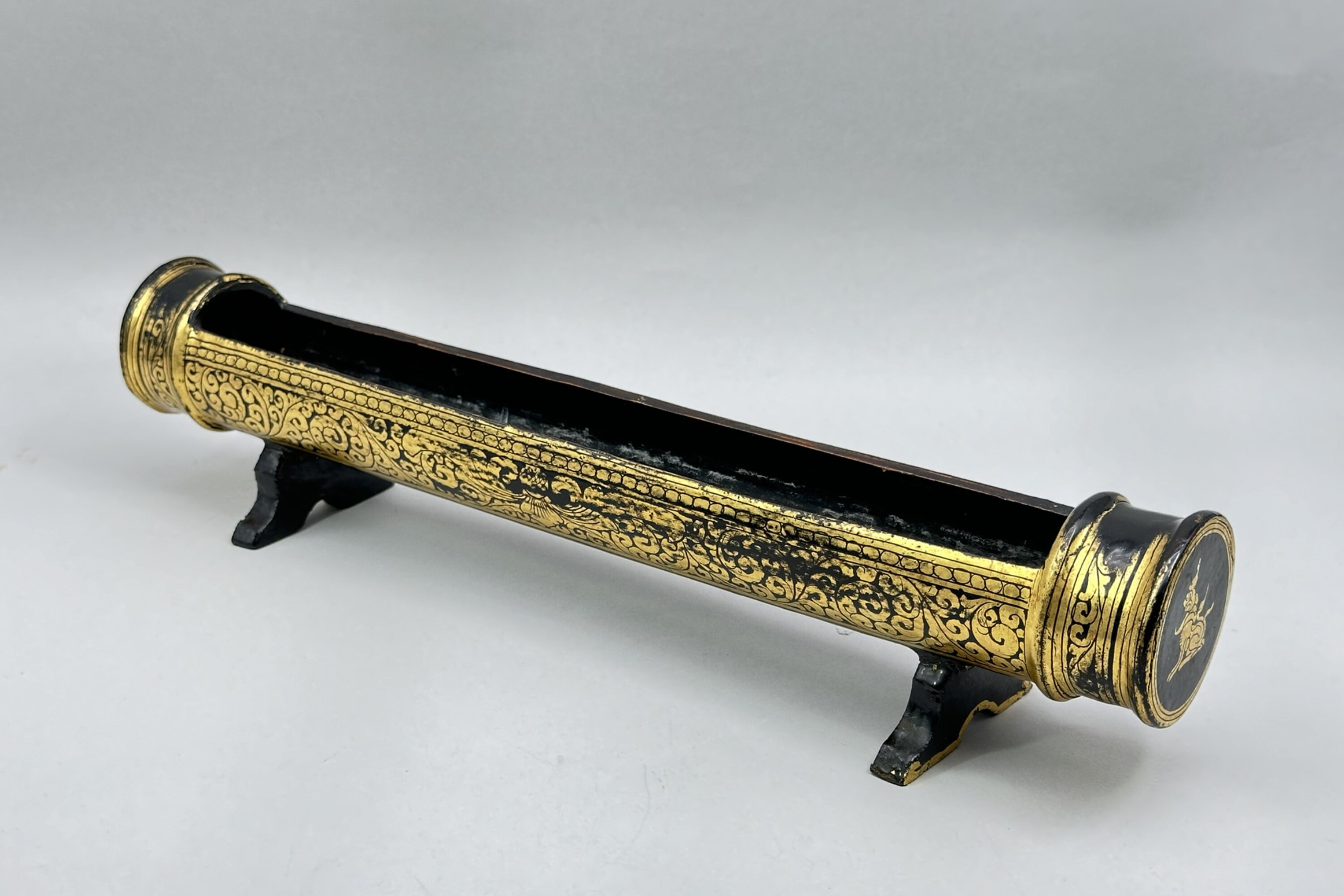
Burmese Black Lacquer and Gilt Scroll Stand, C20th
Price: £25
Indian Carved Wood Tobacco Jar with Jungle Scene, mid C20th
Price: £25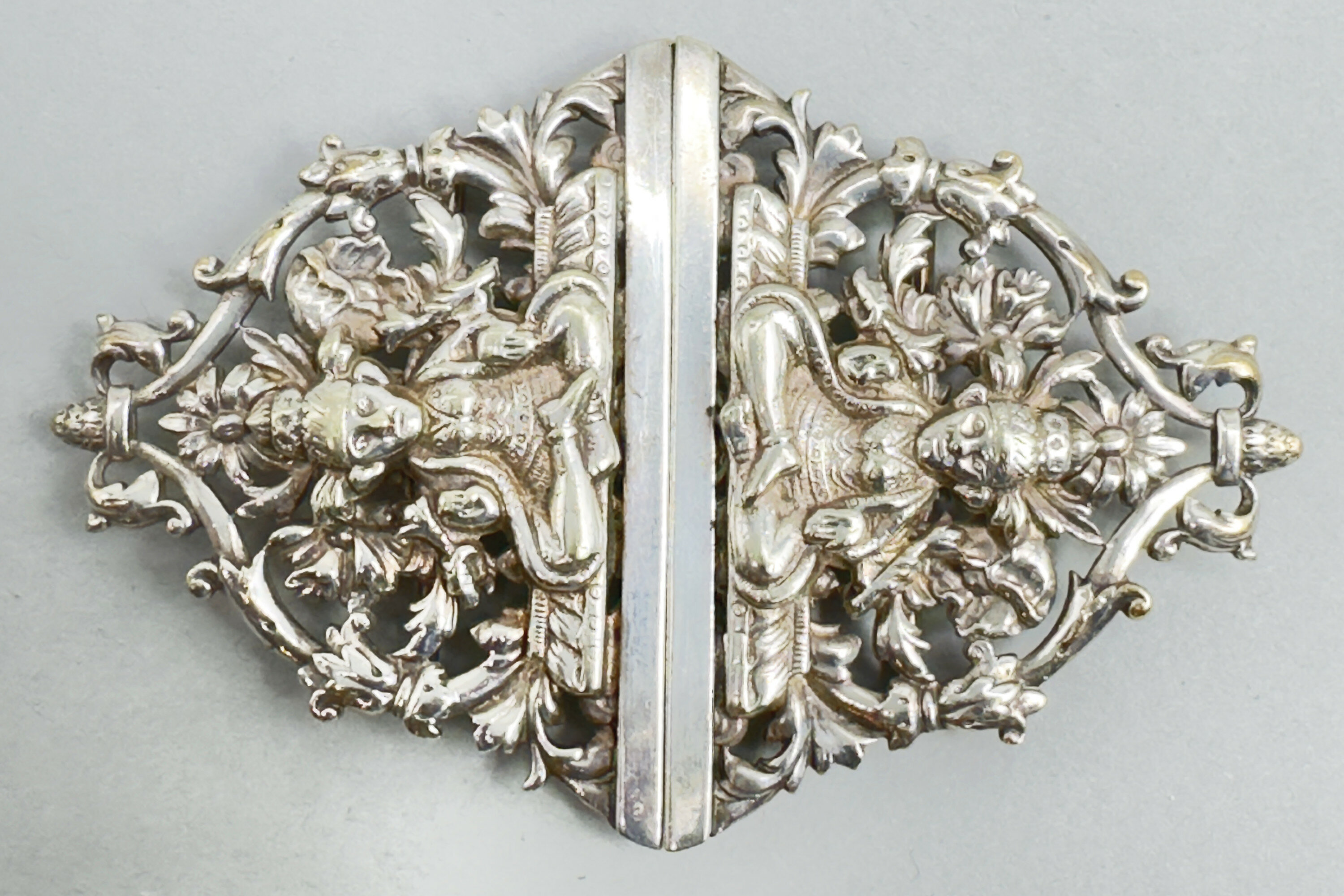
Indian silver buckle with Buddha figures, marked, 1920s
Price: £55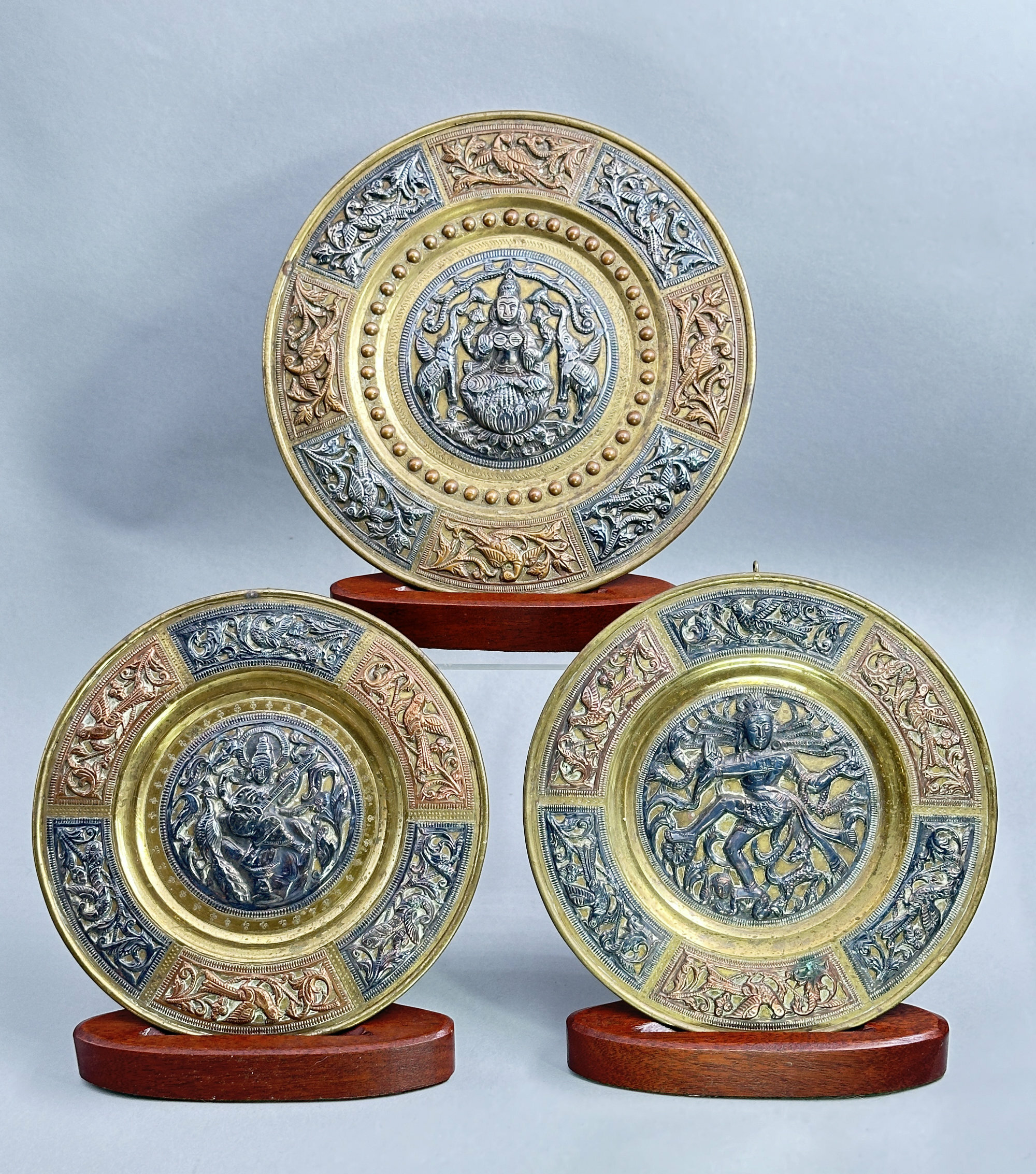
Three Indian Brass hanging plates, Thanjavur, C20th
Price: £55The style of decoration here is typical of the art brass hanging plaques produced by the metalworkers of Thanjavur, formerly known as Tanjore, from the late eighteenth century onwards. A Tanjore Art Plate consists of three components: the base plate (brass), a circular central relief panel of a deity worked in silver surrounded by relief panels in copper and silver often depicting flowers. Various deities are depicted here including the well known many armed Shiva. All the reliefs have milled borders but the wells are finished differently, some with engraved designs and one with circular bosses. Dating is probably to the mid C20th but the style of these pieces was continuous and relatively unchanging so an earlier period of manufacture is quite possible.
NB Stands for display purposes only and not included

Indian carved Soapstone Figure of an Elephant and Baby Elephant
Price: £25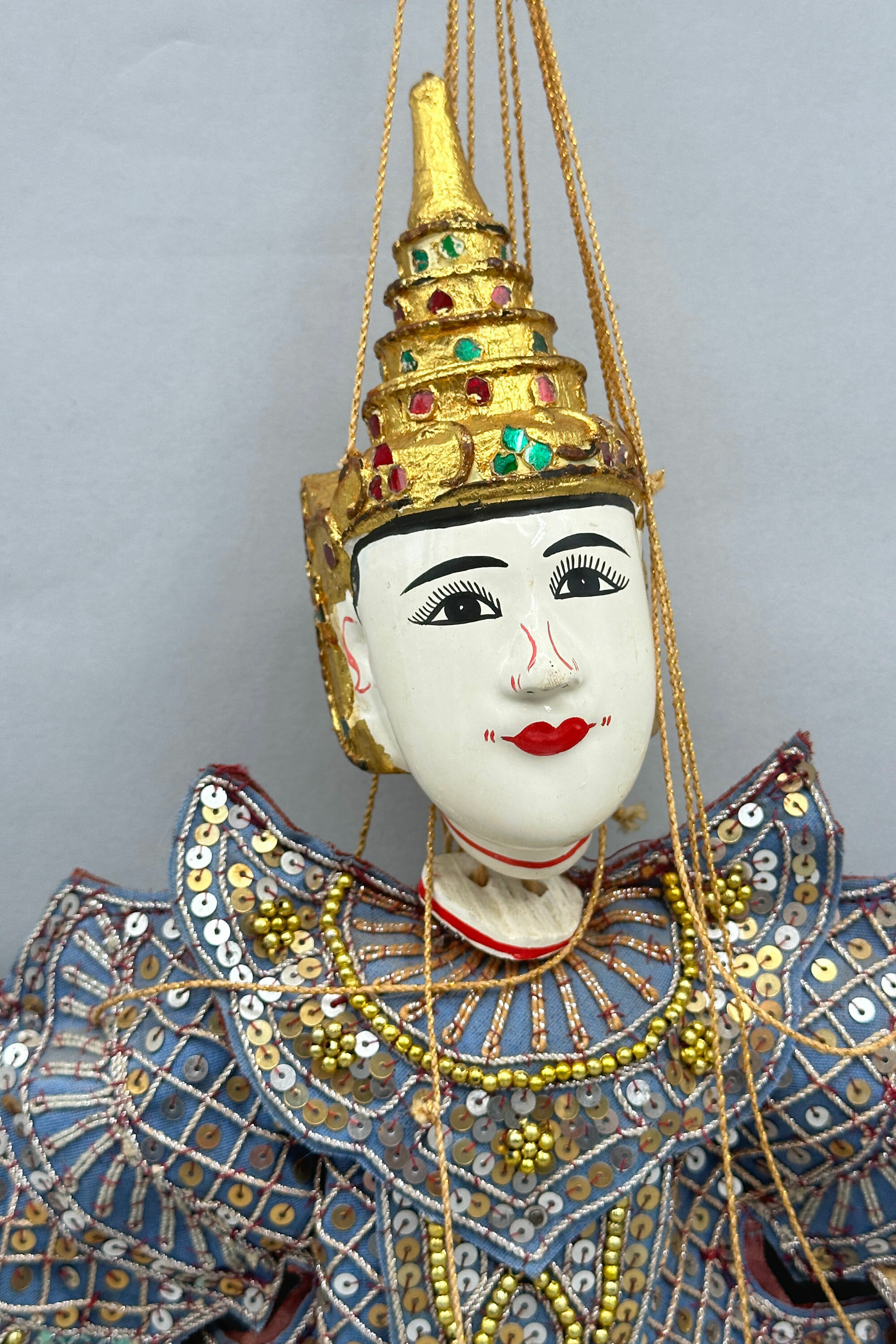
Marionette Puppet of a Dancing Lady or Princess, probably Burmese late C20th
Price: £45The style of the dress suggests Burmese work and very similar fabric decoration can be seen in the cloth wall hangings also included in this sale. Burma has a tradition of marionette puppetry (marionettes are a specific form of puppet where the figure is controlled by strings or rods) which dates back to the late eighteenth century and is still popular today with visitors to the country, now called Myanmar. Termed ‘Yoke thé’, the Burmese marionette tradition allowed political commentary under the guise of of an entertainment display. The standard ‘troupe’ comprised twenty seven characters, both animal and human, and this lady figure is probably the ‘princess’ (‘Minthami’). She is a fine example of the genre and probably dates to the 1990s when General Khin Nyunt of the ruling junta lent official support to marionette actors and troupes in an attempt to revive a tradition which had fallen somewhat into decline.
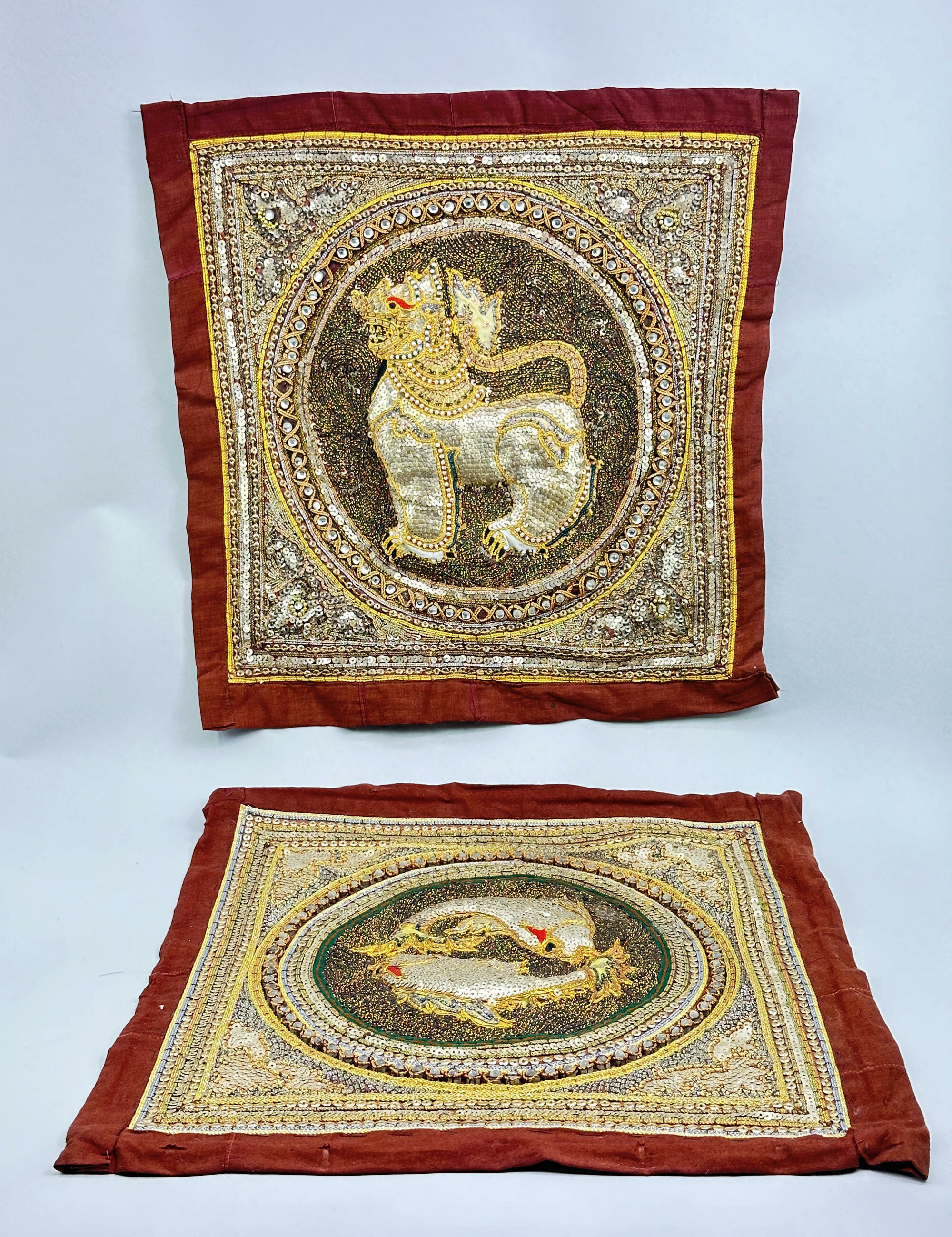
Two Burmese Textiles, mid C20th
Price: £55The distinctive style of embroidery and applied work here is typical of Burmese work known as ‘Kalaga’ which means ‘curtain’ in Burmese and is used to refer to heavily embroidered appliqué tapestry sewn with a technique called ‘shwe gyi do’. First produced around 150 years ago, Kalagas are generally linen, silk, cotton or velvet background fabrics embellished with sequins, embroidery, beads, coloured stones, tiny pearls, coral, braids and metal threads, the choice of materials depending in part on the client’s budget. Cotton padding was used to produce the ‘3D’ effect seen here and on many other examples of the work. The elaborate decoration meant that some of the larger pieces could take many months to produce. These two panels are an excellent example of the genre with the lavish use of gold thread. They have survived in excellent condition and can decorate an interior today in the same way that they graced the interiors of the makers’ contemporaries. Dating is difficult and a mid C20th attribution is probably sensible but an earlier period of manufacture is quite possible.
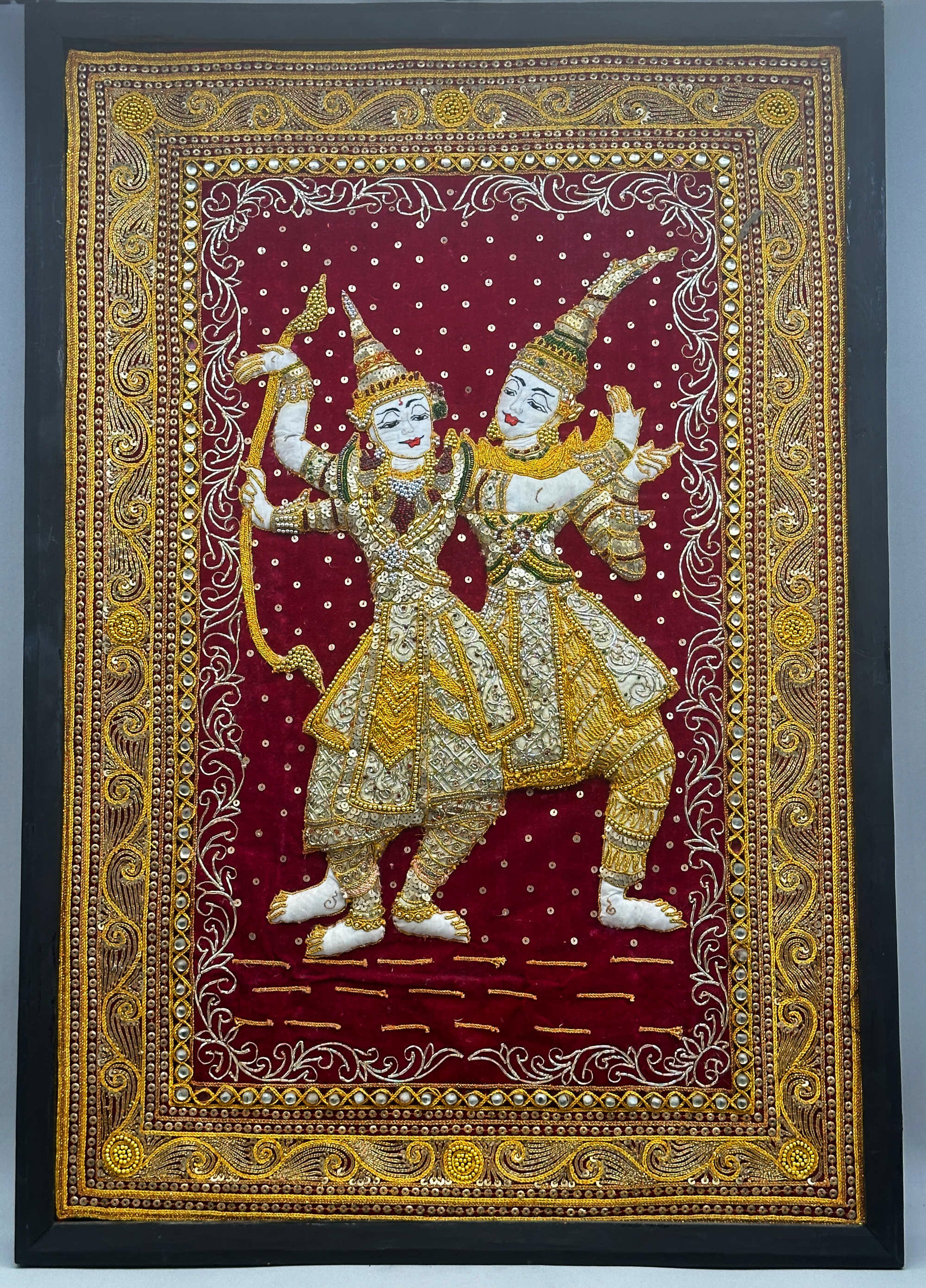
Large Burmese Textile with two dancing figures, probably second half C20th
Price: £110The distinctive style of embroidery and applied work here is typical of Burmese work known as ‘Kalaga’ which means ‘curtain’ in Burmese and is used to refer to heavily embroidered appliqué tapestry sewn with a technique called ‘shwe gyi do’. First produced around 150 years ago, Kalagas are generally linen, silk, cotton or velvet background fabrics embellished with sequins, embroidery, beads, coloured stones, tiny pearls, coral, braids and metal threads, the choice of materials depending in part on the client’s budget. Cotton padding was used to produce the ‘3D’ effect seen here and on many other examples of the work. The elaborate decoration meant that some of the larger pieces could take many months to produce which is likely to have been the case here. Dating is difficult and a mid C20th attribution here is probably sensible but an earlier period of manufacture is quite possible. The hanging has been recently mounted on board and fitted with a simple frame making it ready for display in a contemporary interior.
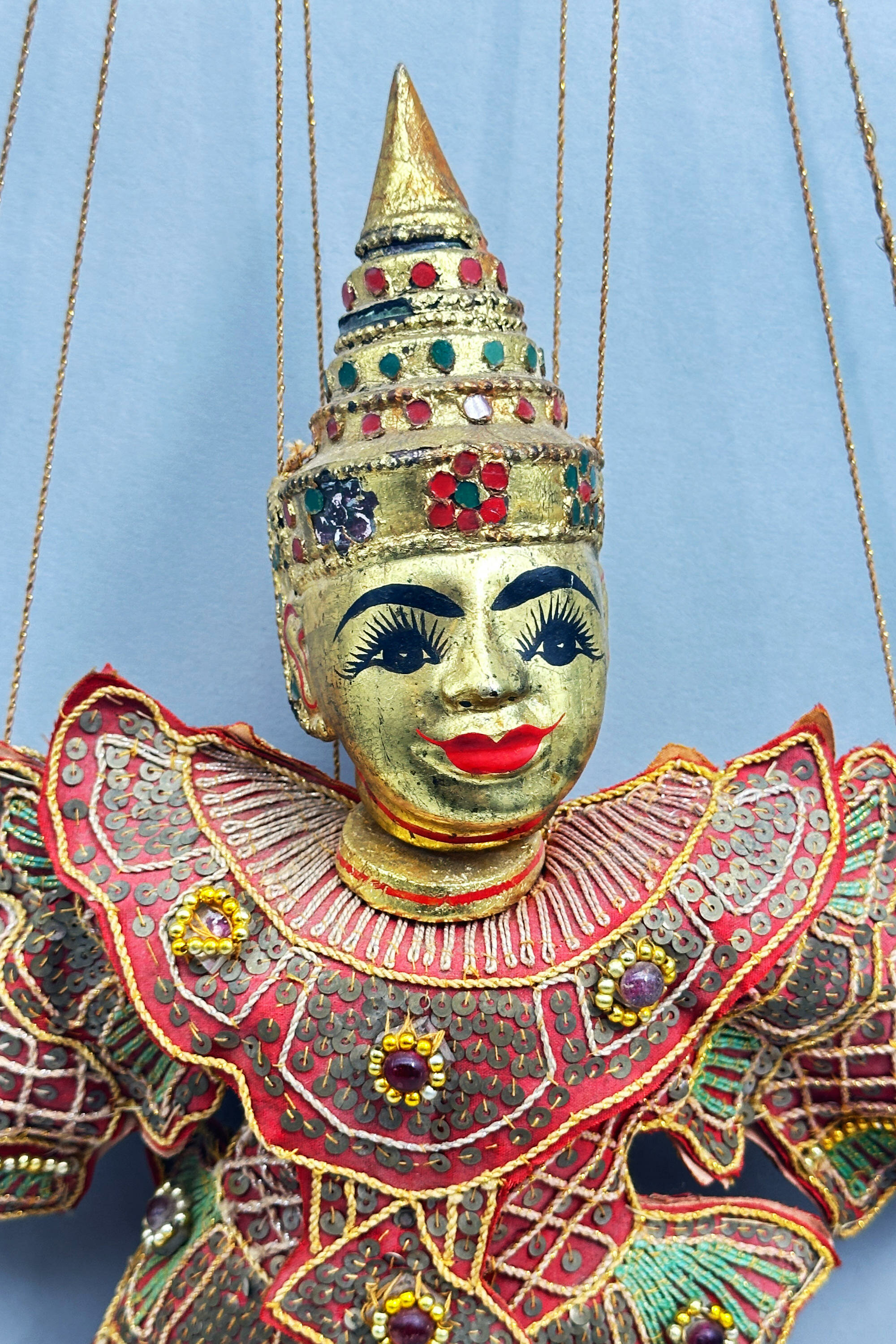
Marionette Figure of a Prince, probably Burmese mid C20th
Price: £45The style of the dress suggests Burma which has a tradition of marionette puppetry (marionettes are a specific form of puppet where the figure is controlled by strings or rods) dating back to the late eighteenth century and still popular today with visitors to the country, now called Myanmar. Termed ‘Yoke thé’, the Burmese marionette tradition allowed political commentary under the guise of of an entertainment display. The standard ‘troupe’ comprised twenty seven characters, both animal and human, and this male figure is probably the ‘King’ (‘Mintayar gyi’). Dating is probably to the mid C20th and a little earlier than the female marionette figure also included in this sale. This figure is rather more majestic as befits his regal status.

Balinese tigers eye Necklace, C20th
Price: £55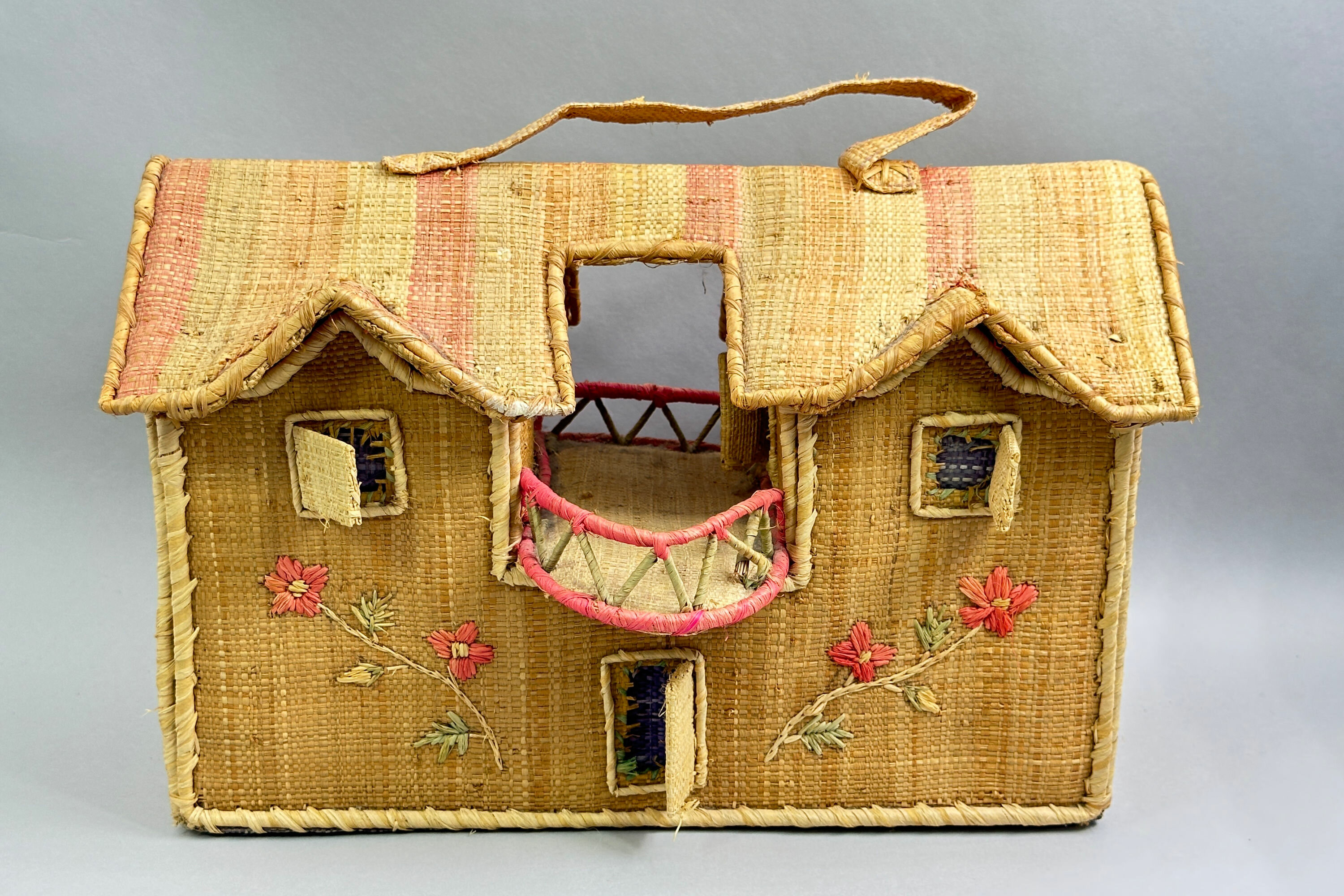
Charming Novelty handbag, Thailand 1950s
Price: £45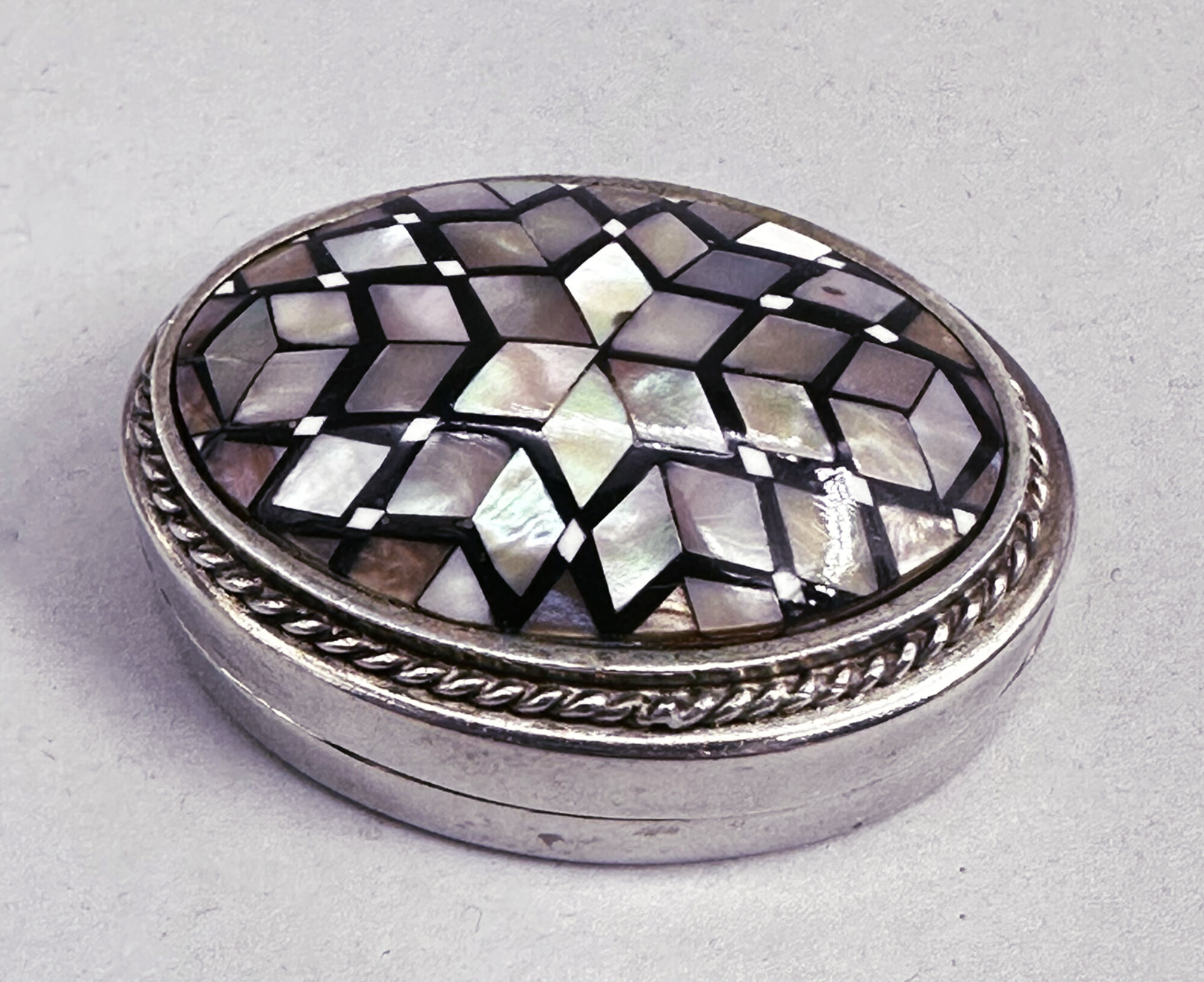
Egyptian Silver Pill Box with Mother of Pearl Inlay, marked, second half C20th
Price: £45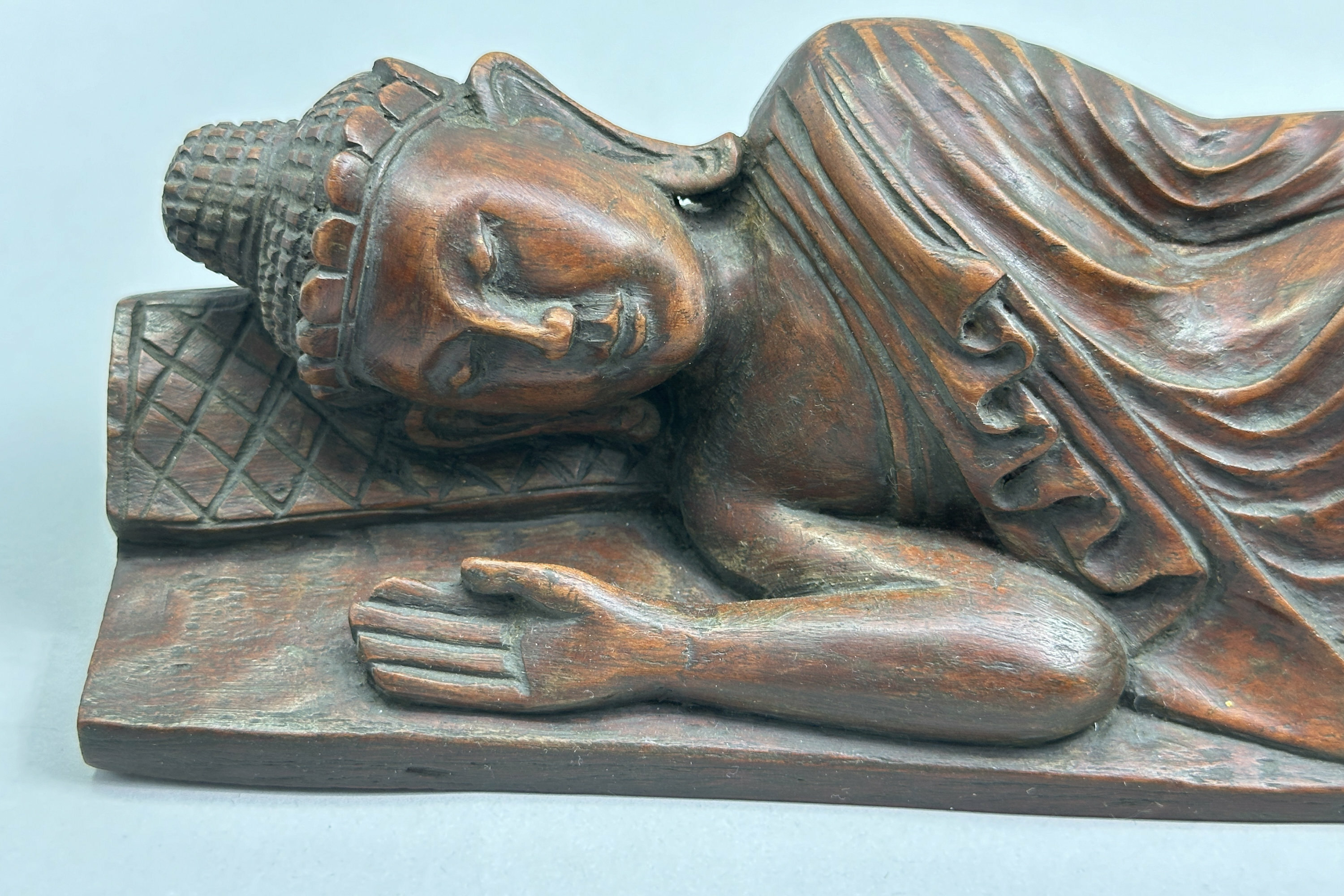
Burmese wood figure of a reclining Buddha with worshipper, C20th
Price: £25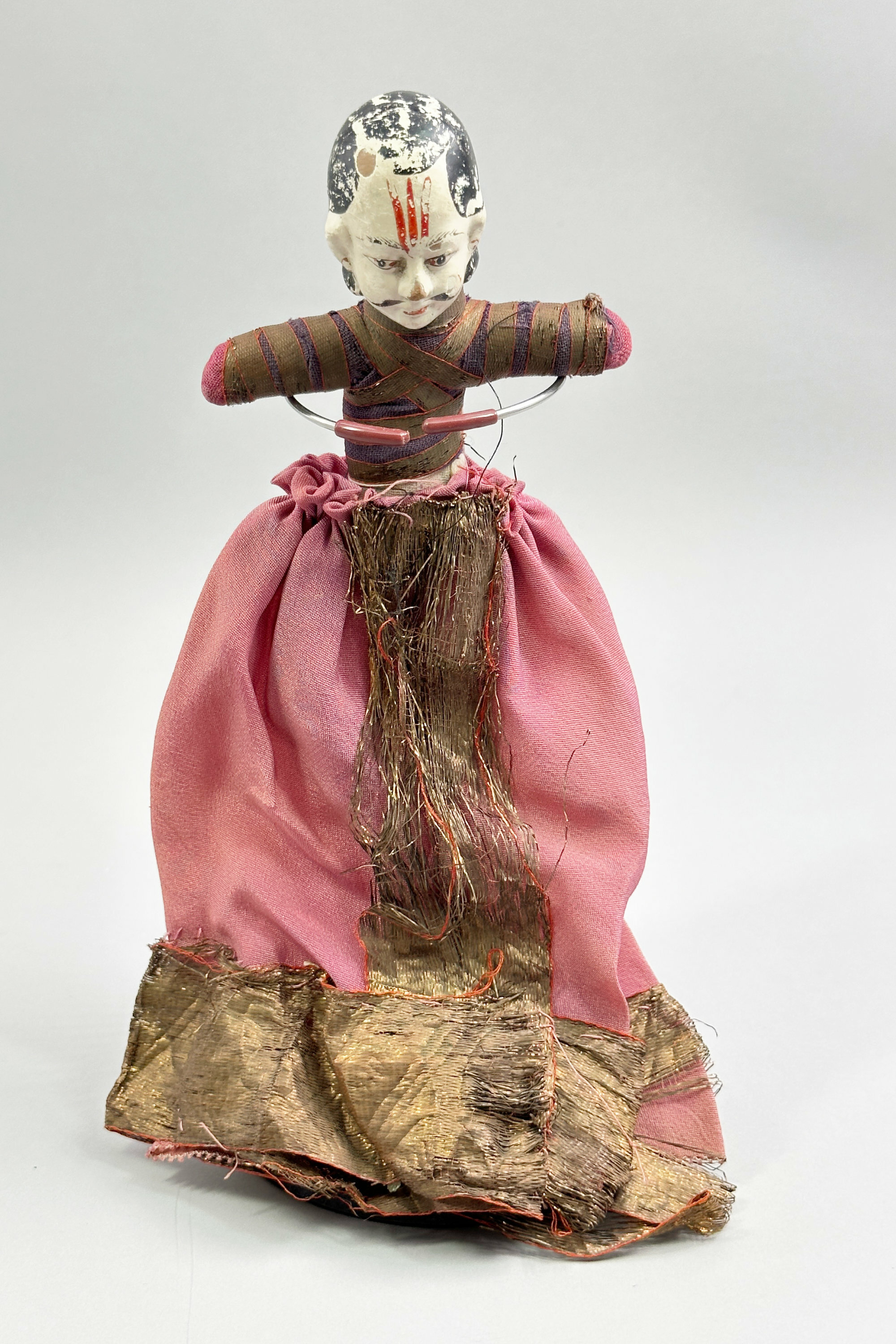
Burmese doll figure of a Priest, C20th
Price: £45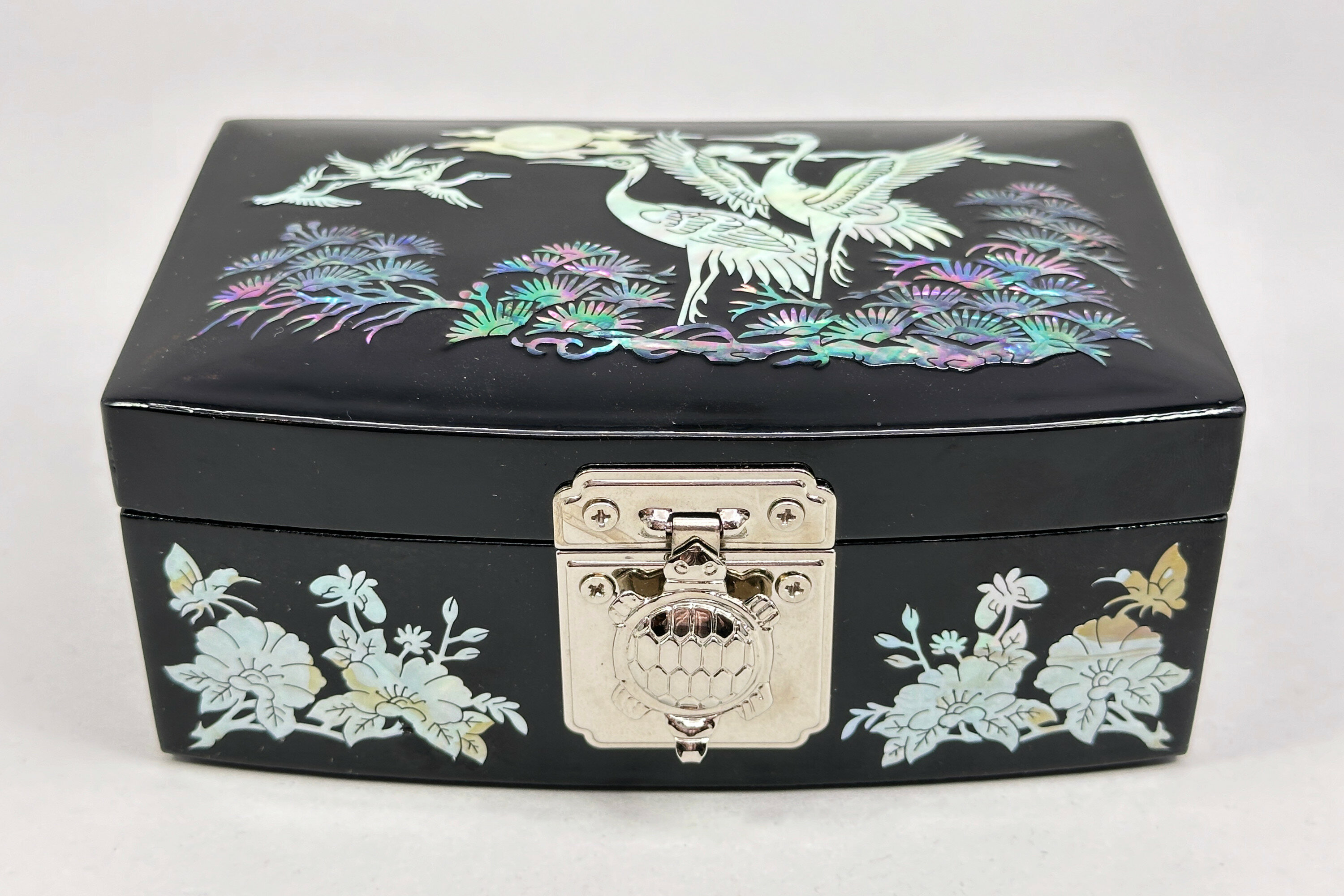
Korean Najeonchilgi lacquerware jewellery Box, C20th
Price: £25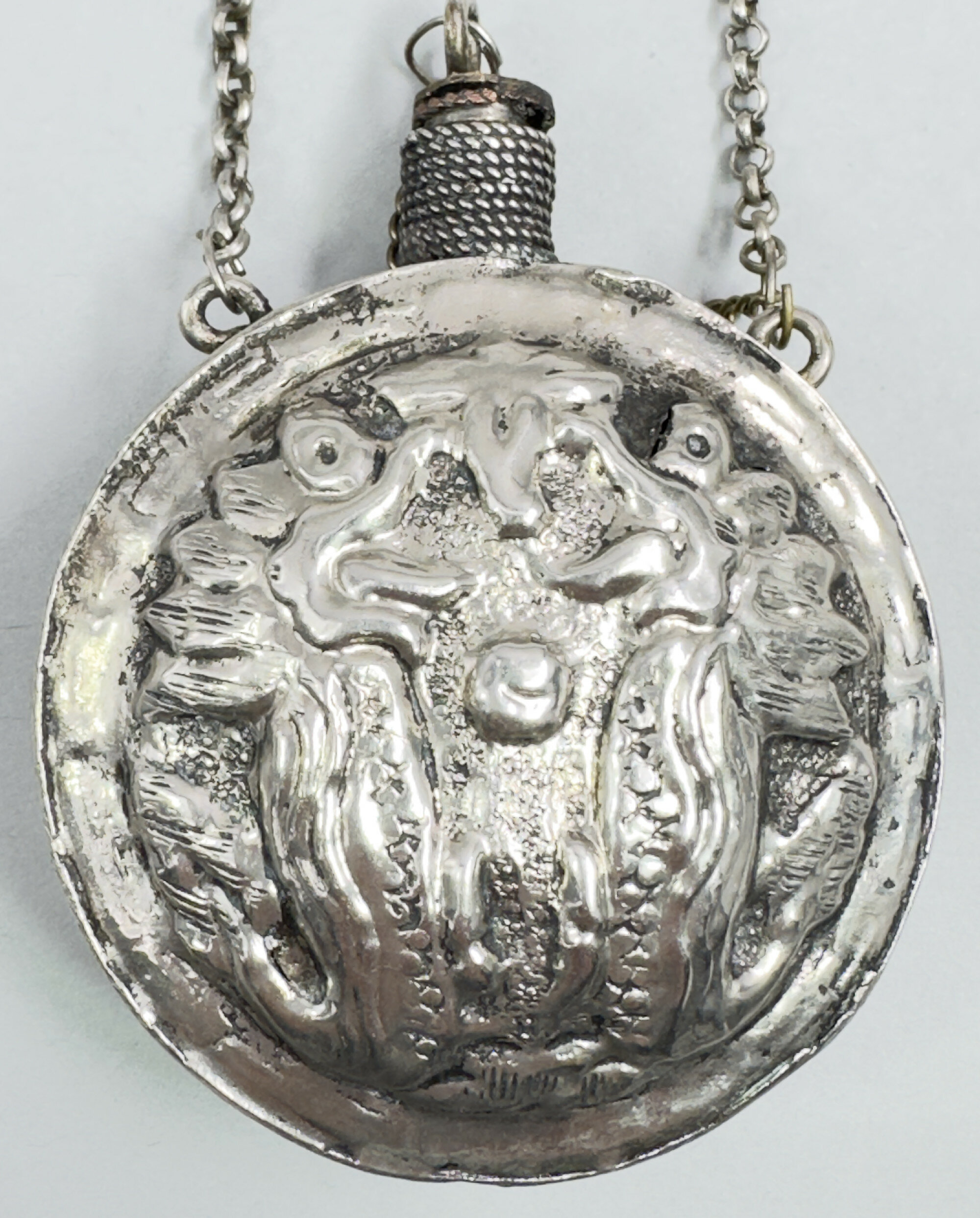
Silver plate Perfume Bottle with attached Stopper and Chain, Burmese late C19th
Price: £45
Balinese Silver Bangle with Elephant Heads, 1980s
Price: £45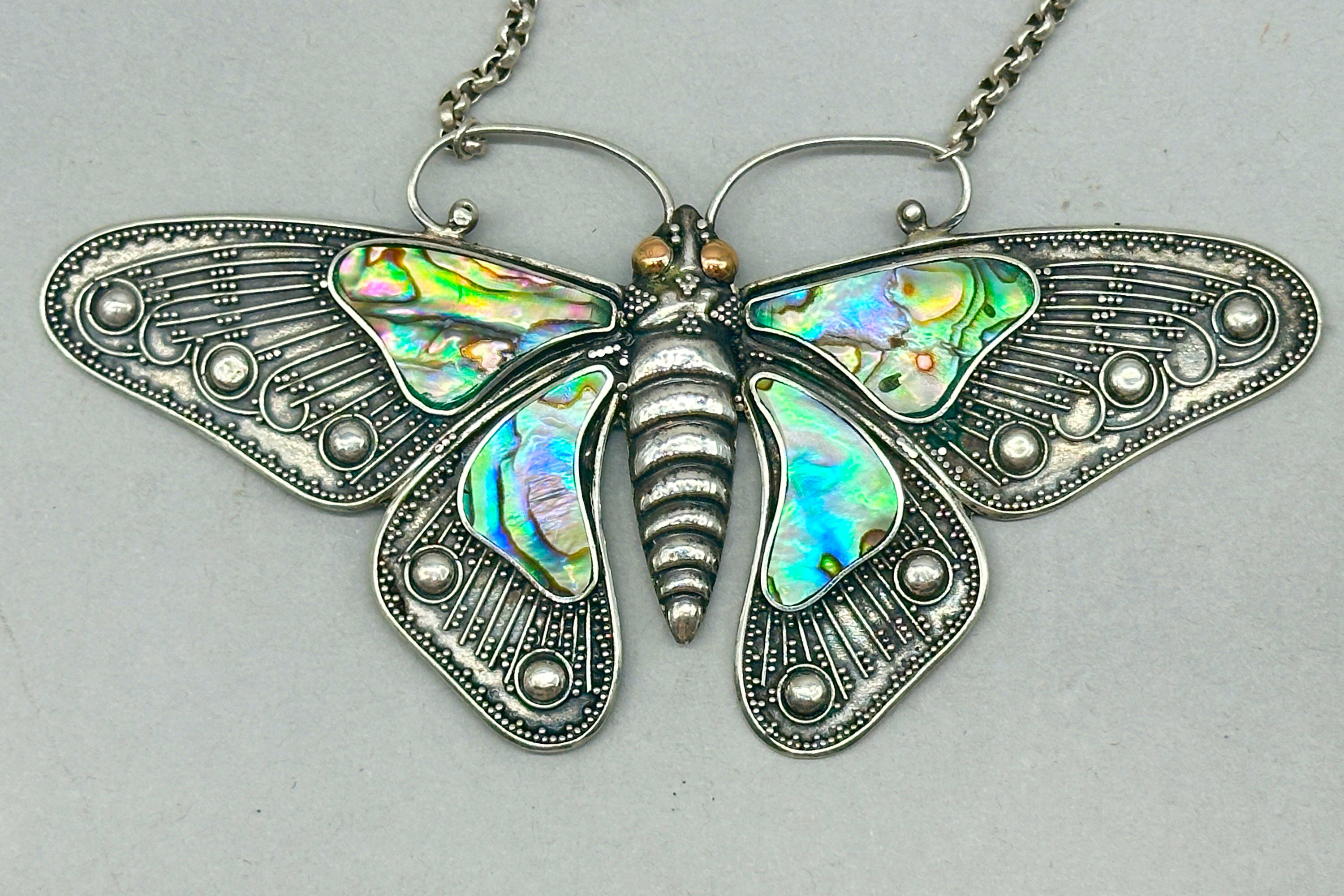
Silver Butterfly form Pendant set with Abalone, Bali, C20th
Price: £95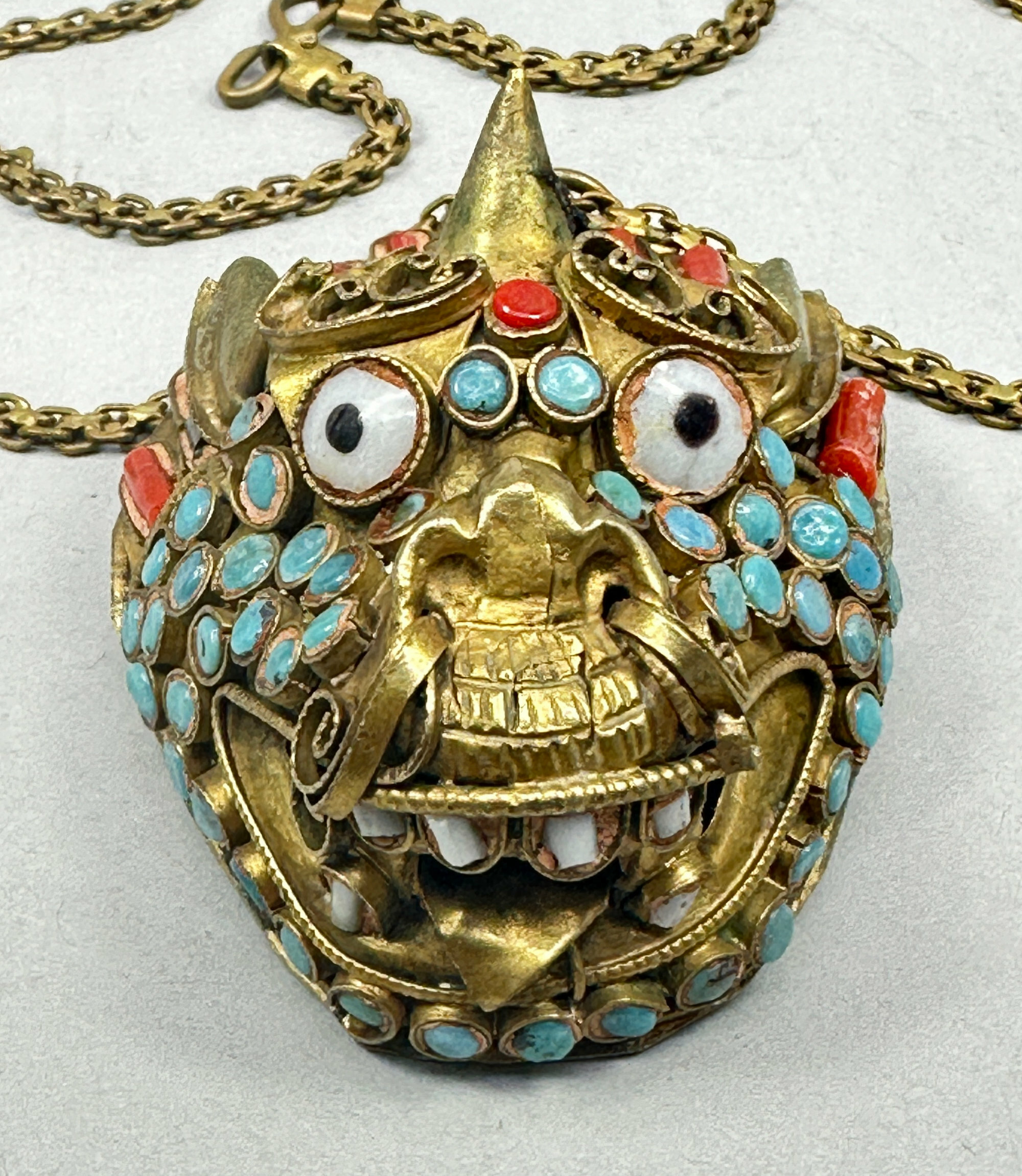
Art Deco Burmese dragon head Necklace, 1920s
Price: £75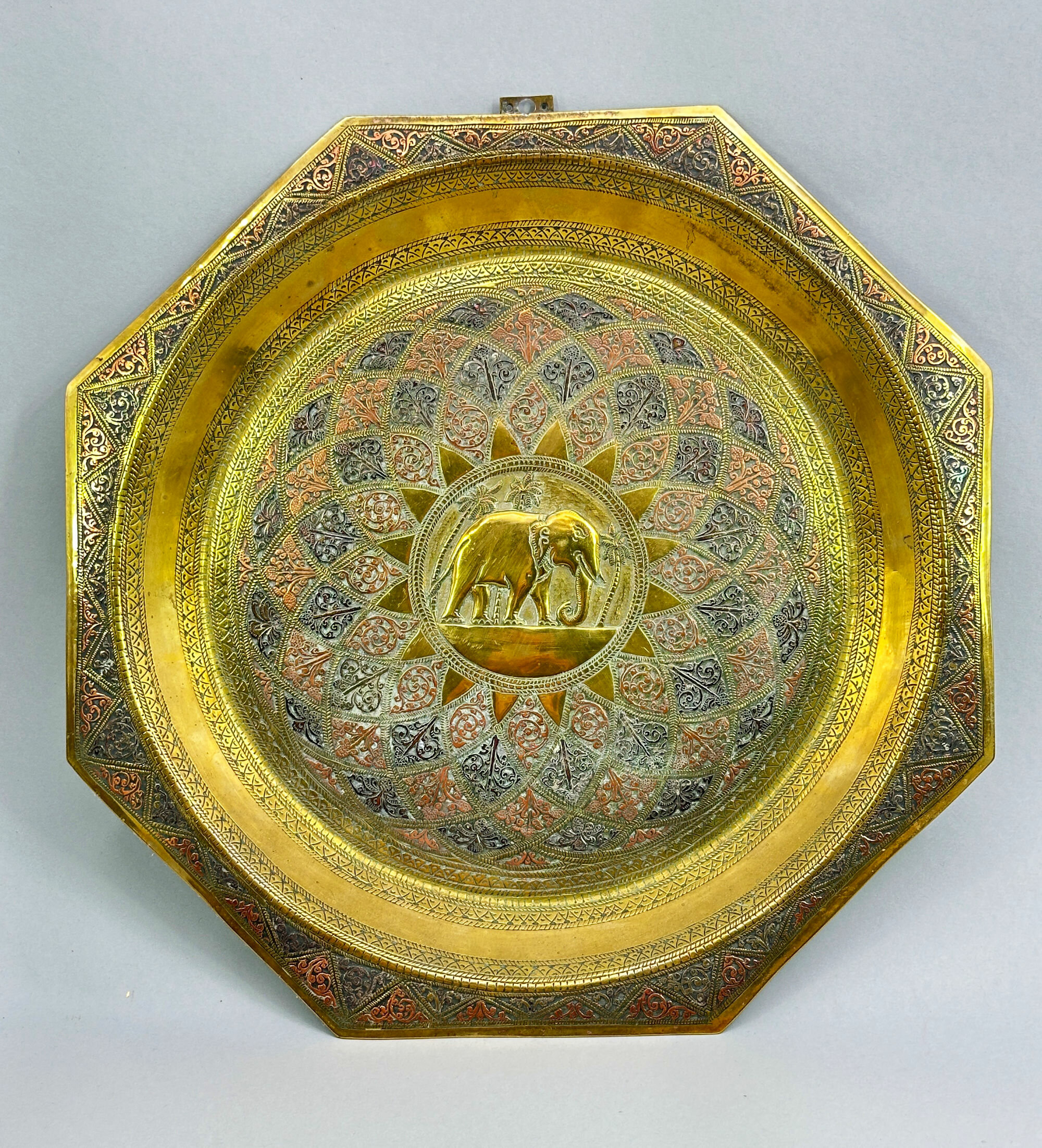
An Octagonal Brass Tray with a roundel of an elephant, probably Persian early C20th
Price: £45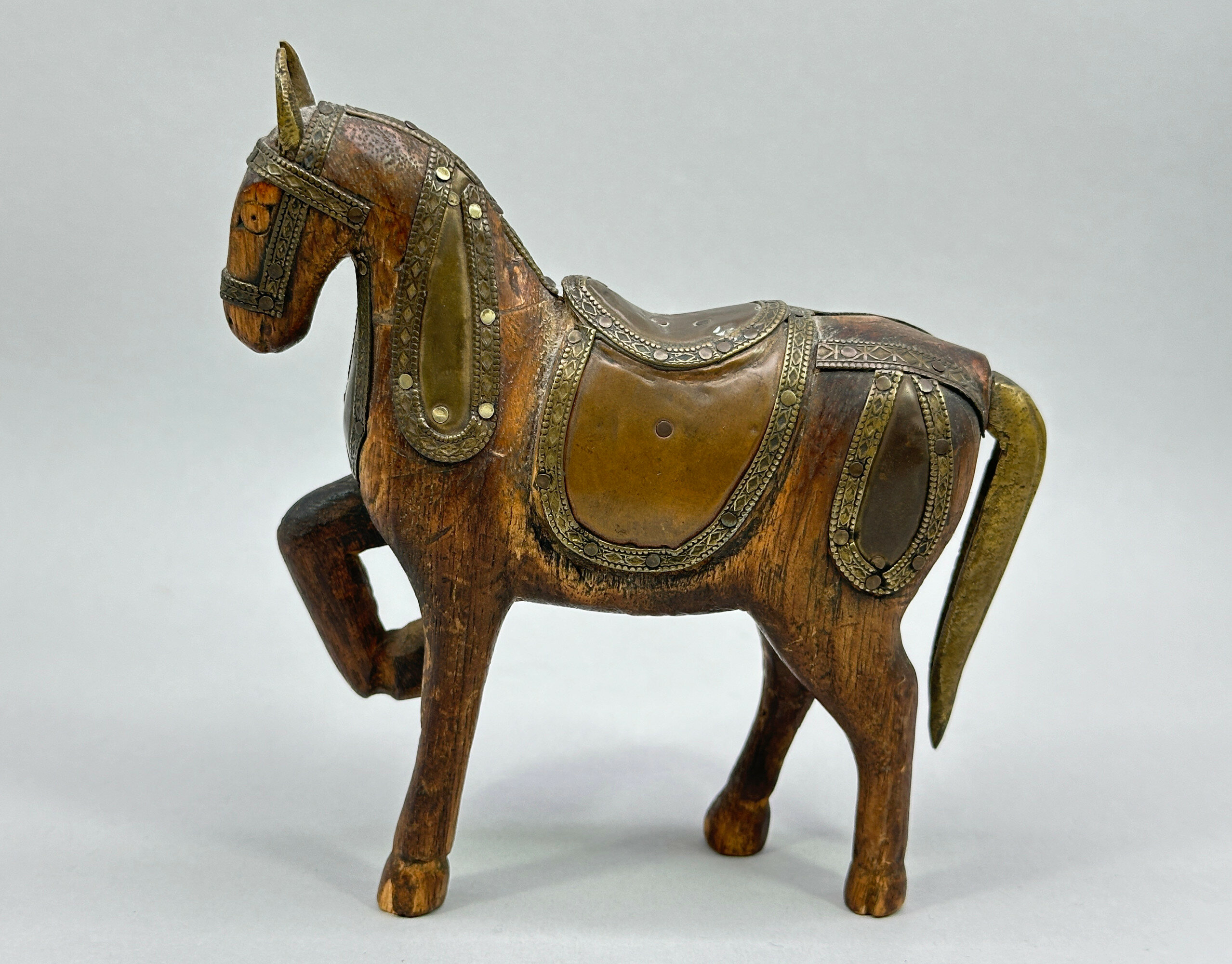
Indian wooden toy model of a Horse with metal fitments, early C20th
Price: £25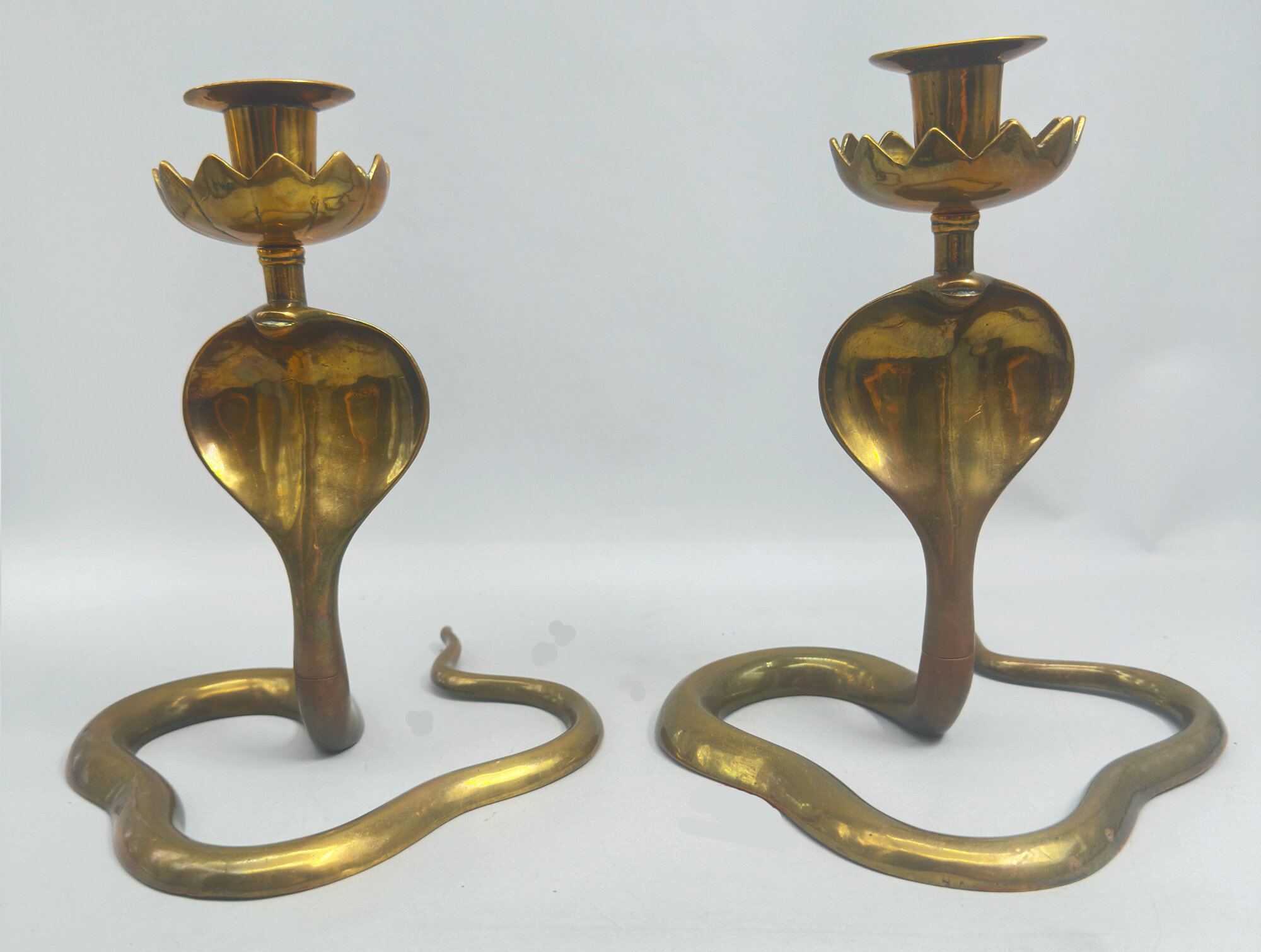
Fine quality pair of Brass Cobra Candlesticks, Indian first half C20th
Price: £150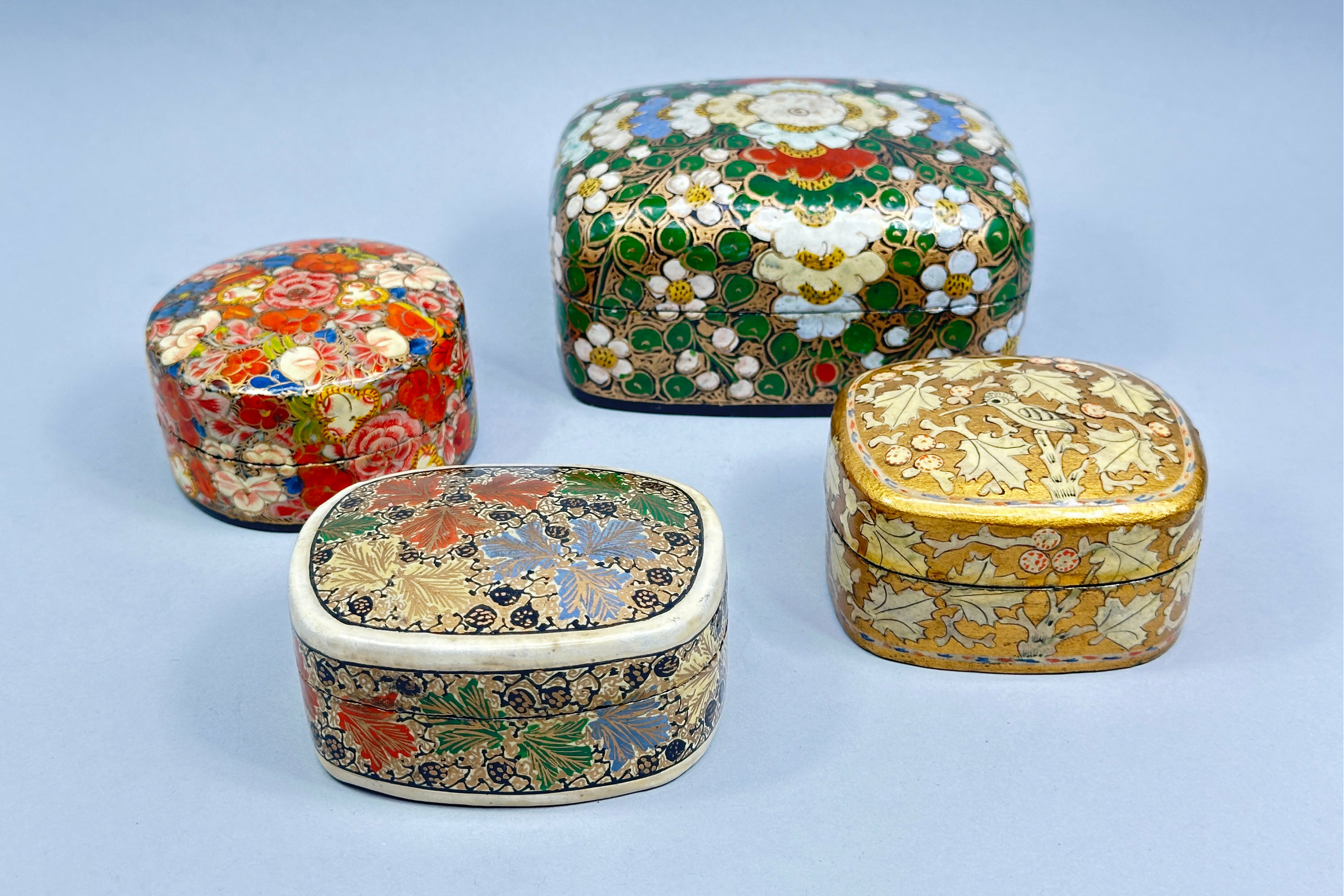
Four Papier-mâché Trinket Boxes, Kashmir, mid C20th
Price: £35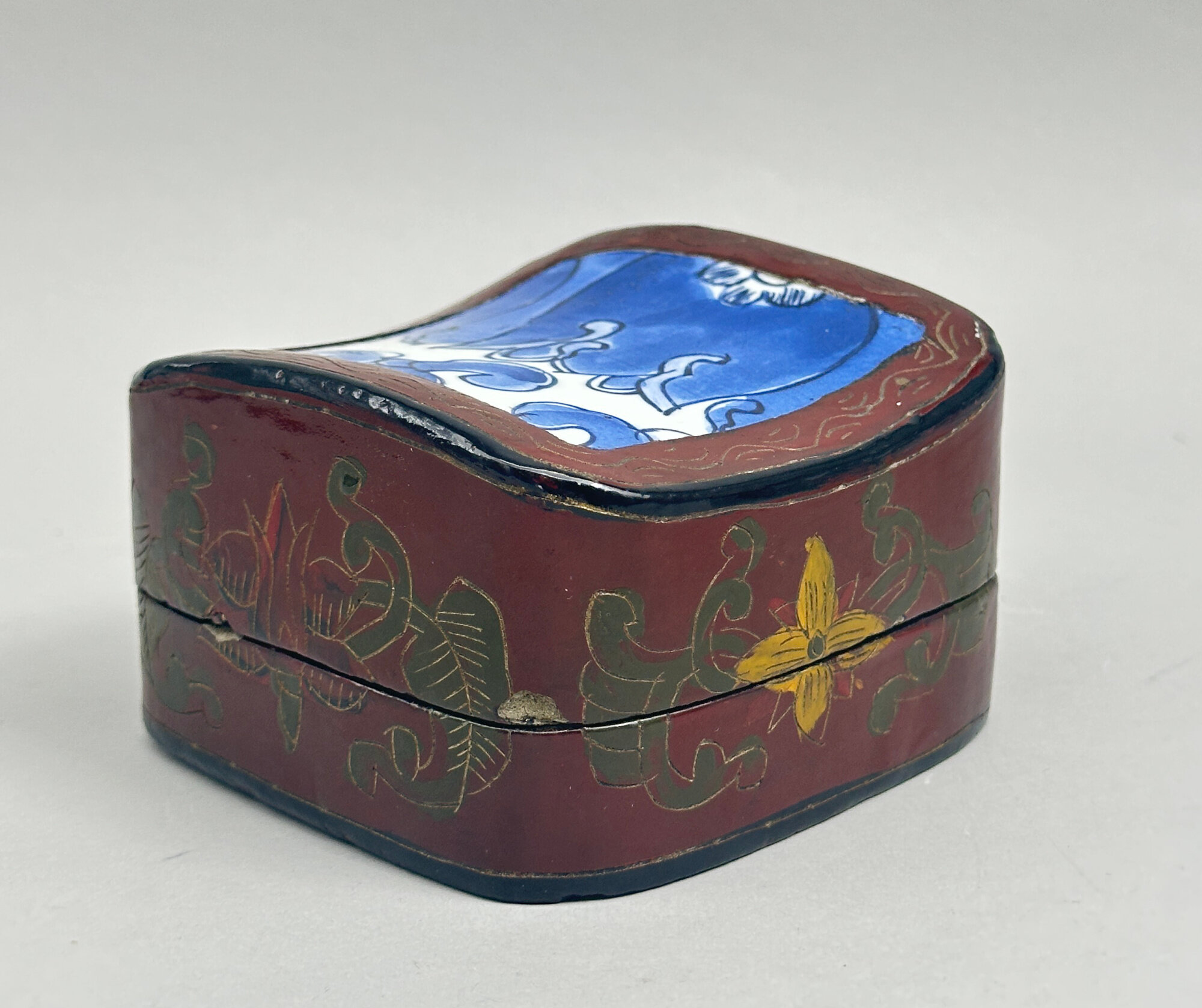
Vintage Lacquer Box with an inset ceramic Shard, probably Persian C20th
Price: £25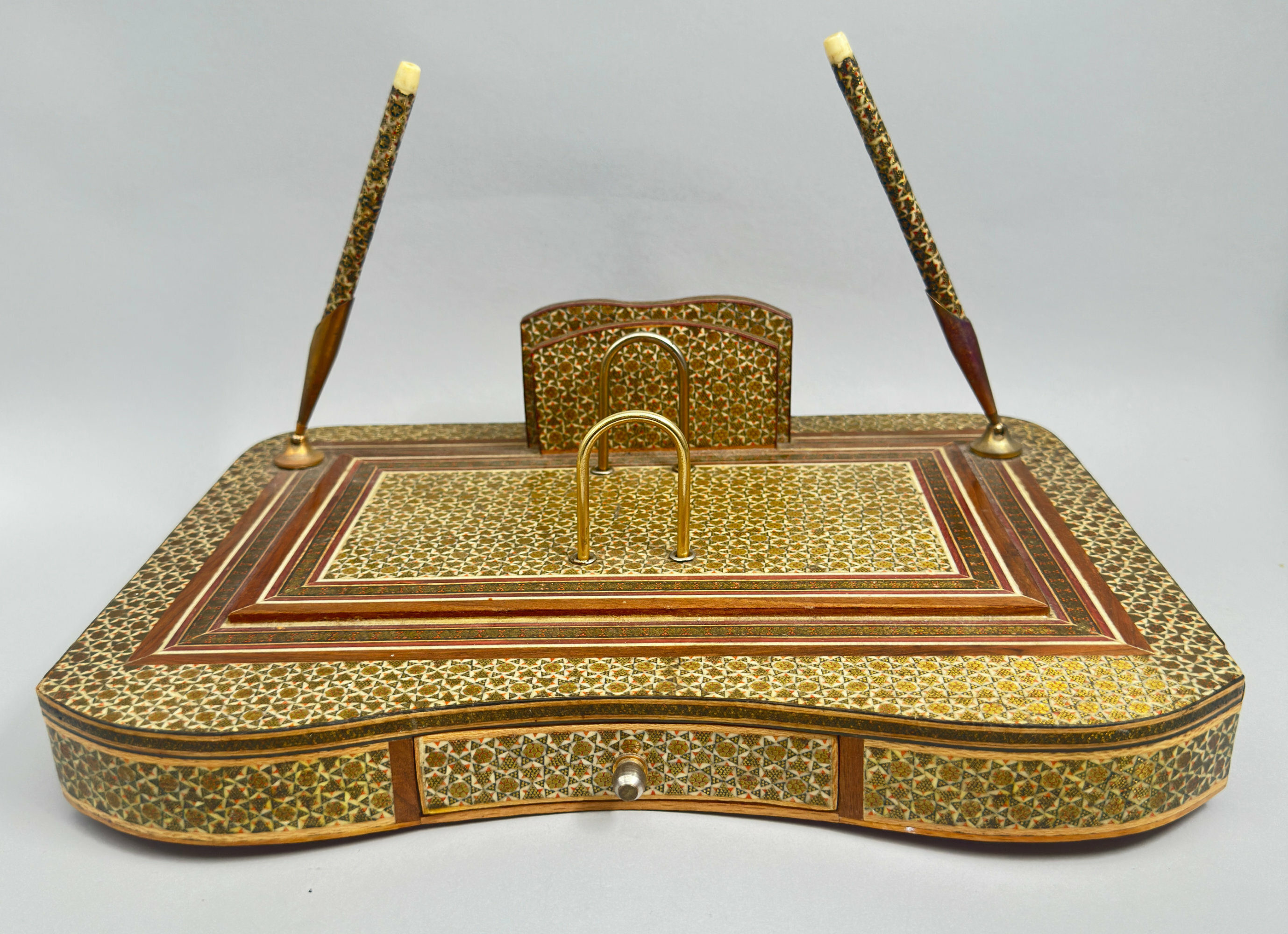
Persian Marquetry Khatam Kari Desk Set, second half C20th
Price: £55The intricate marquetry decoration used here, with its repeating star form pattern, is called ‘Khatam’ work. Khatam is the capital of Khatam County in Iran and is the centre for craftsmen working in this technique. Khatam is a Persian version of marquetry in which the surface of wooden articles is decorated with small pieces of wood, bone and metal formed into precisely-cut geometric shapes. The process is time consuming involving the cutting of the shapes and gluing them in place, followed by smoothing, oiling and polishing. In Persian, the work is known as ‘Khatam kari’, ‘the art of crafting Khatam ware’.
These desk sets occur in a wide variety of forms. The drawer is less commonly found and decorated pen holders are, as said above, most unusual. These sets seem to have been made from the 1950s onwards. The use of a ‘biro’ pen indicates a dating from the 1960s onwards and perhaps this example is a bit later than that, but the workmanship speaks for itself and the piece has survived in excellent condition with minimal damage, providing a truly elegant ‘desk tidy’ for the contemporary study!
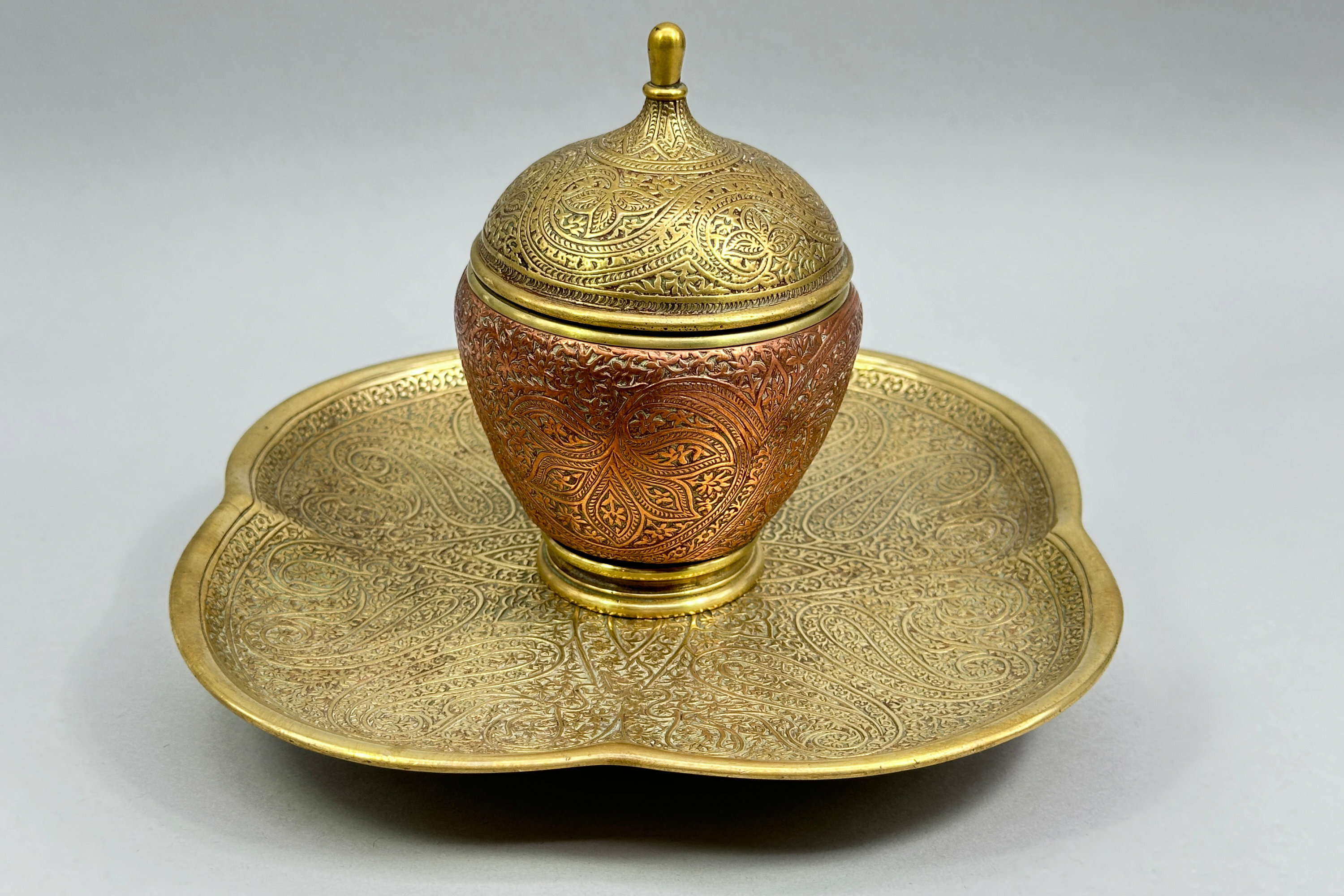
Indian Brass and Copper Inkwell, C20th
Price: £55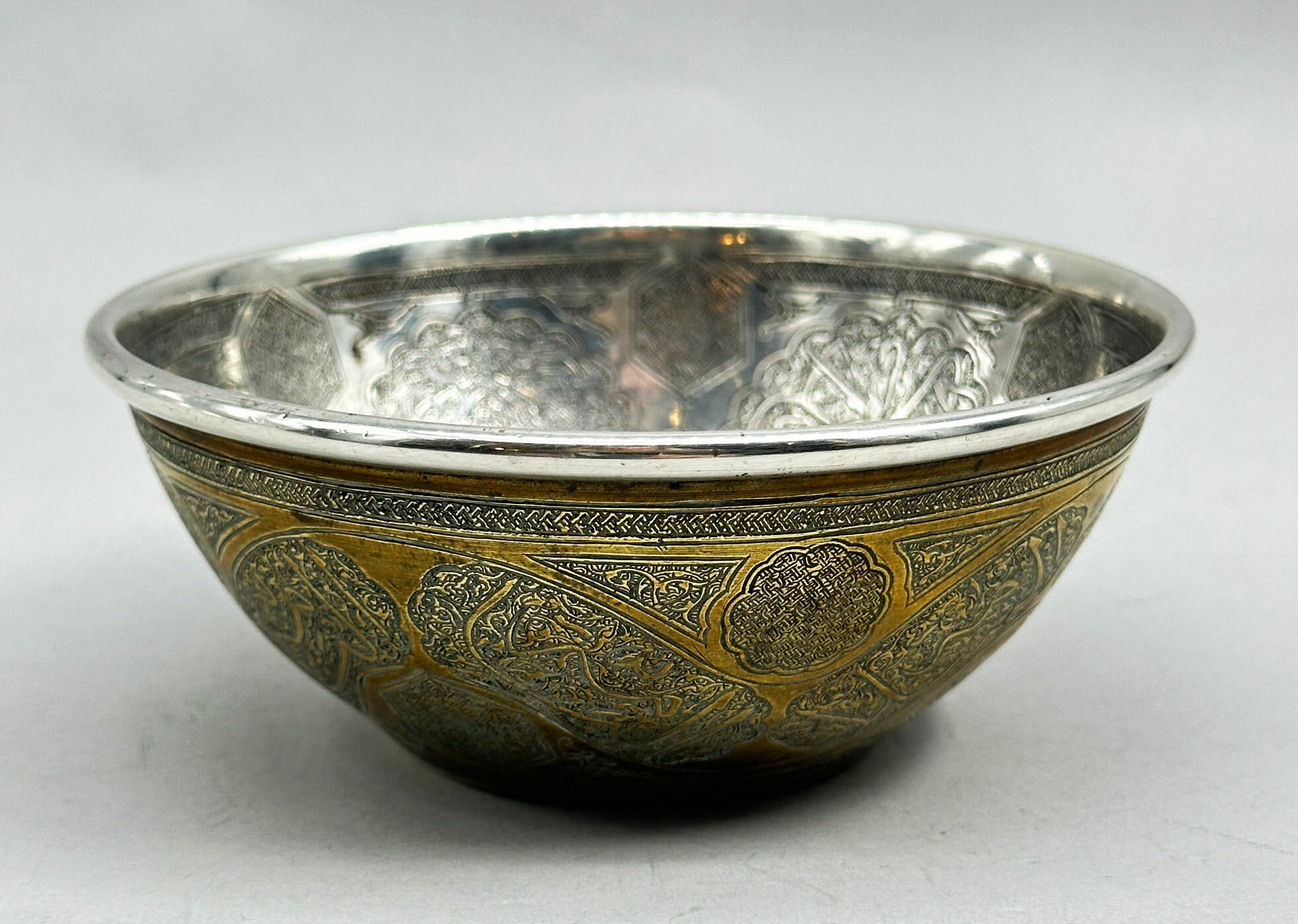
Fine Quality Persian Silver and Brass Hammam Bowl, C20th
Price: £110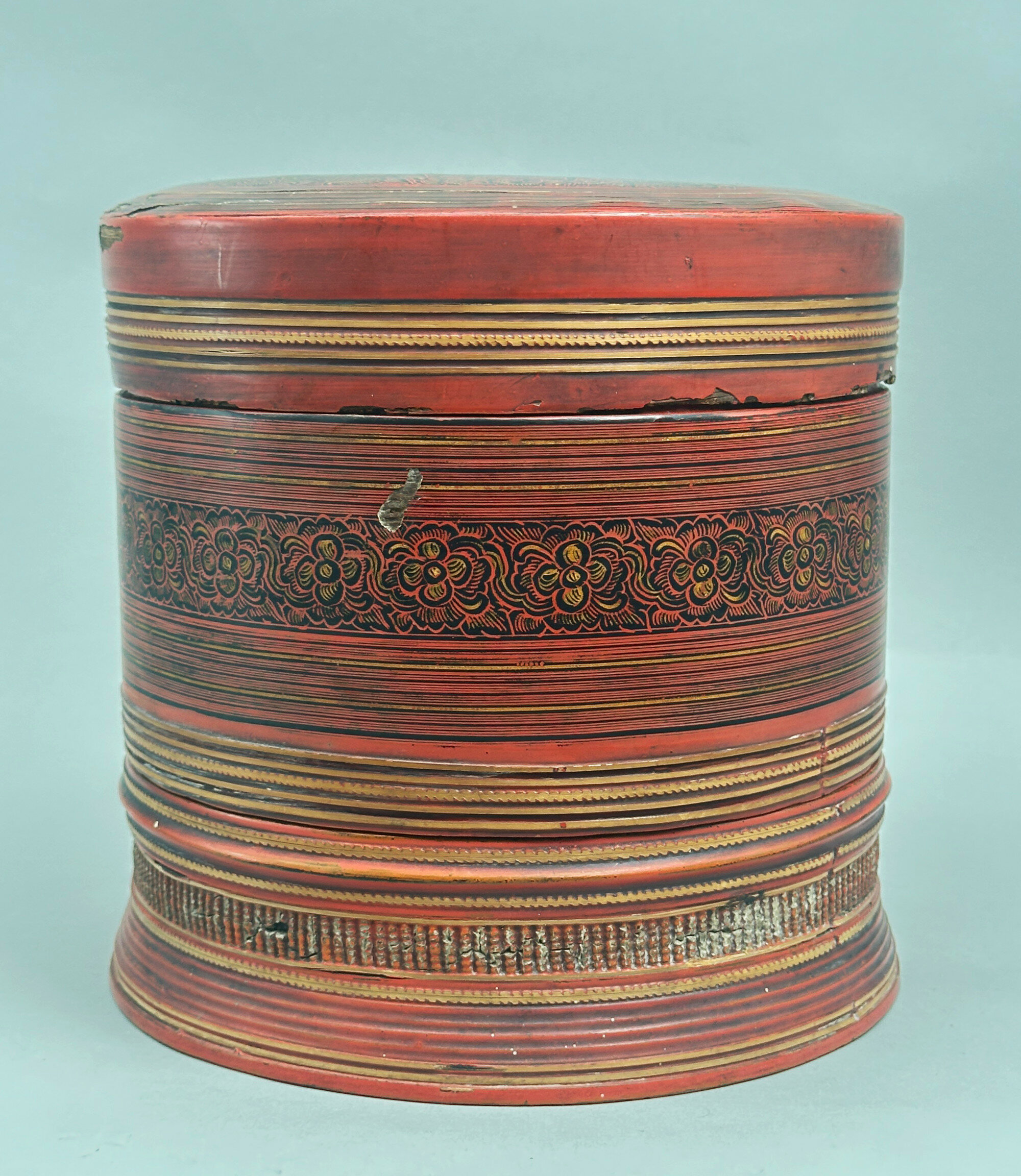
Burmese Lacquer Three Section Betel Box, early C20th
Price: £95The betel box seems to be mainly confined to Burmah, now Myanmar, and was normally made using the lacquer techniques for which the country was so well known. A woven bamboo, or sometimes cane or wood, base (which can be seen here where the lacquer has flaked away : see image 12) was covered in multiple layers of lacquer paste, each allowed to dry and then polished, and finally the piece was decorated. The format here is typical : an upper section with a tray on top covered by a lid which fits on to a lower section also with a tray on the top. The trays are coloured red on the inside and black on the outside, the lid and the boxes orange on the inside. The exterior decoration of the two section body and the base of the lid employs a wide mixture of narrow bands, some indented and some raised, with a broader band of repeated stylised floral decoration at the top and another with modelled vertical line decoration below. The base is slightly flared and the lid slightly very slightly domed. The top of the lid has a densely packed design comprising temples and dancing figures and the base a design of circles and waves. As with many of these boxes great care was taken in the ornamentation and this example was, perhaps, made for one of the wealthier households.
Dating of these boxes is put in the early years of the twentieth century and they survive as a memento of a tradition which is still practised, but with less elaborate accessories, in the present day.

Silver metal Perfume Bottle Necklace, probably Indian early C20th
Price: £55